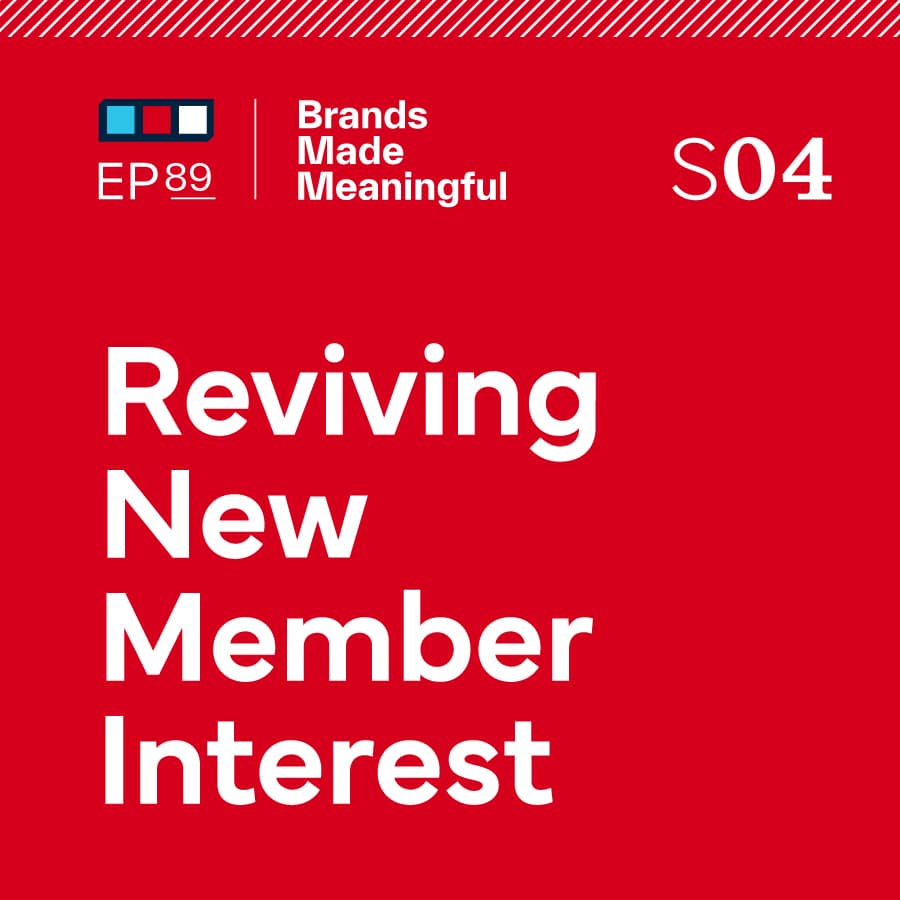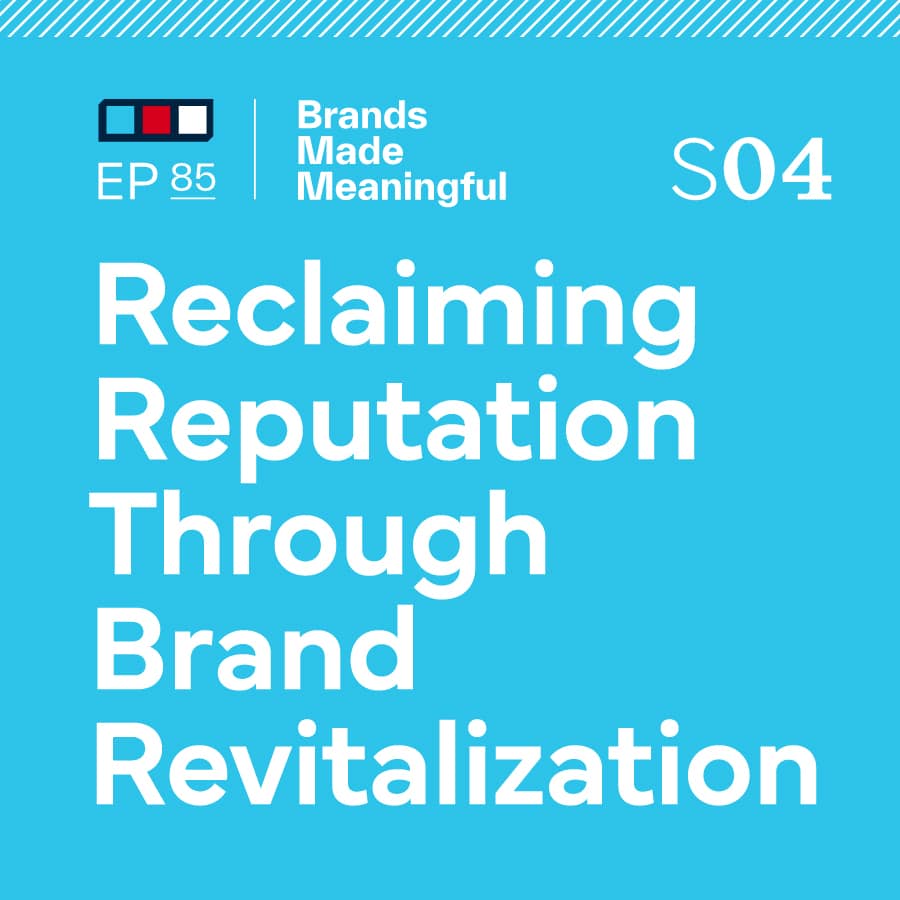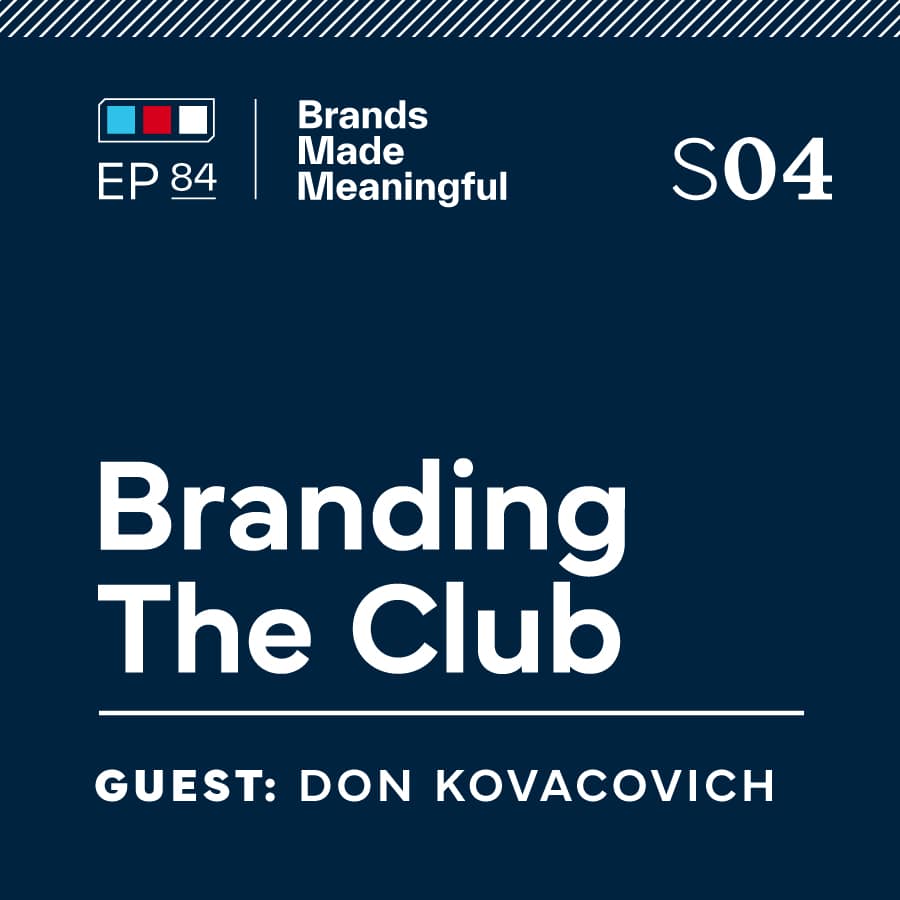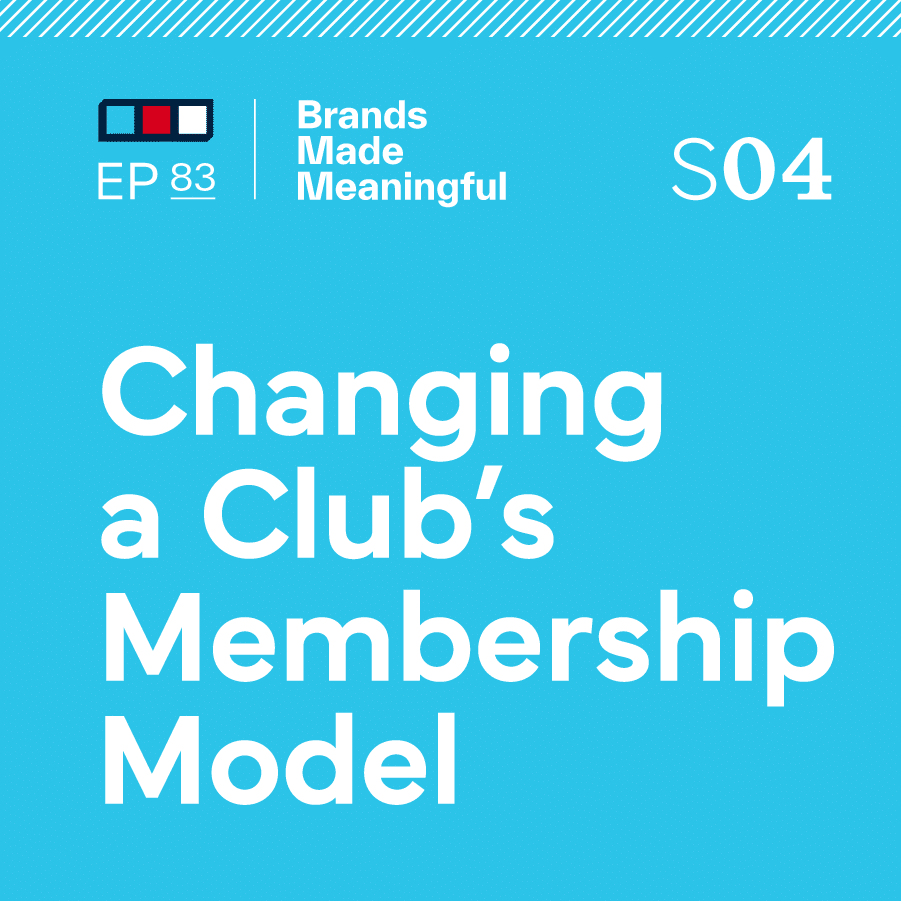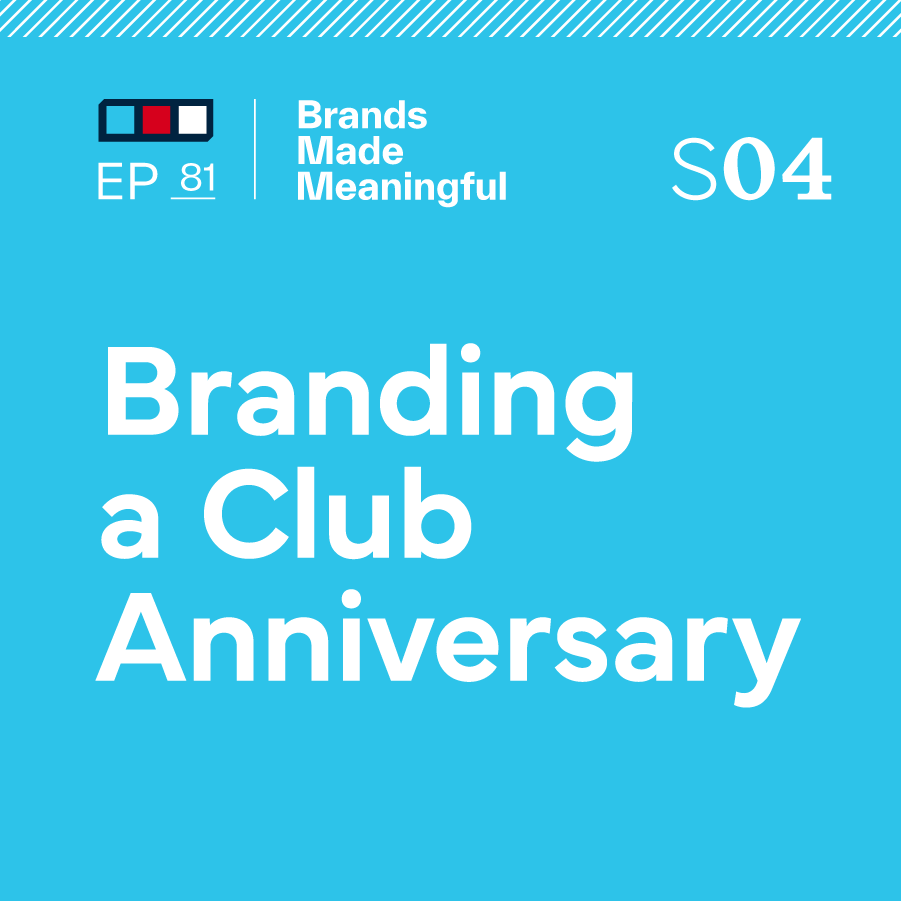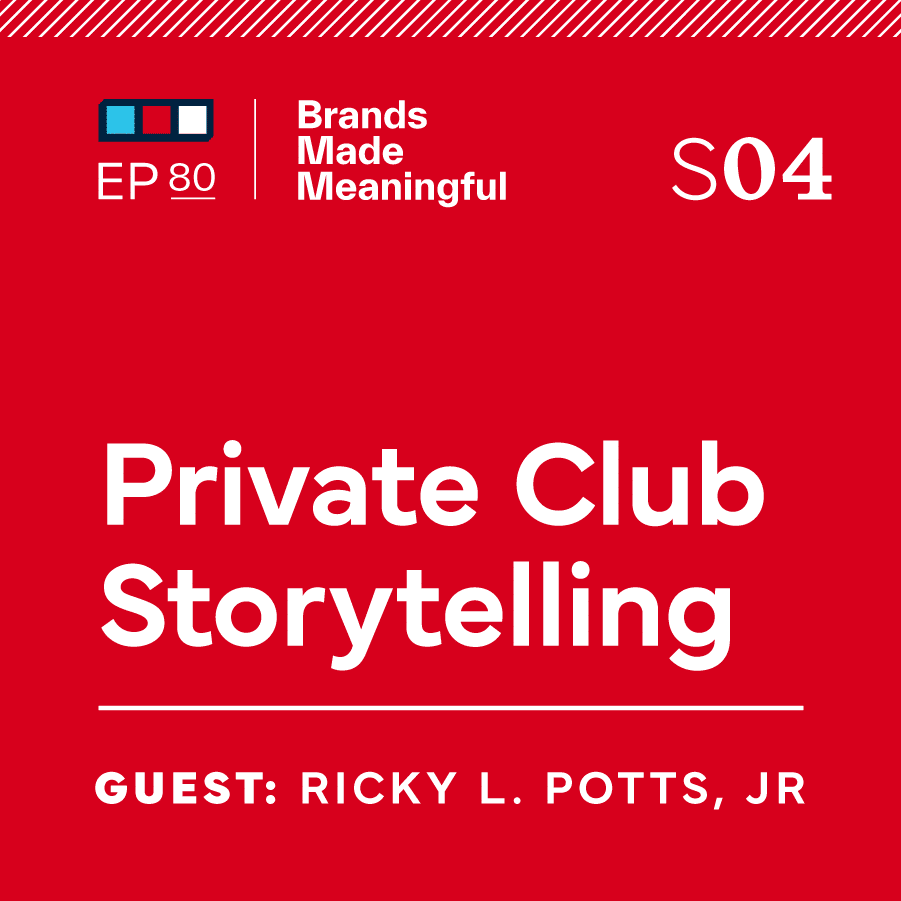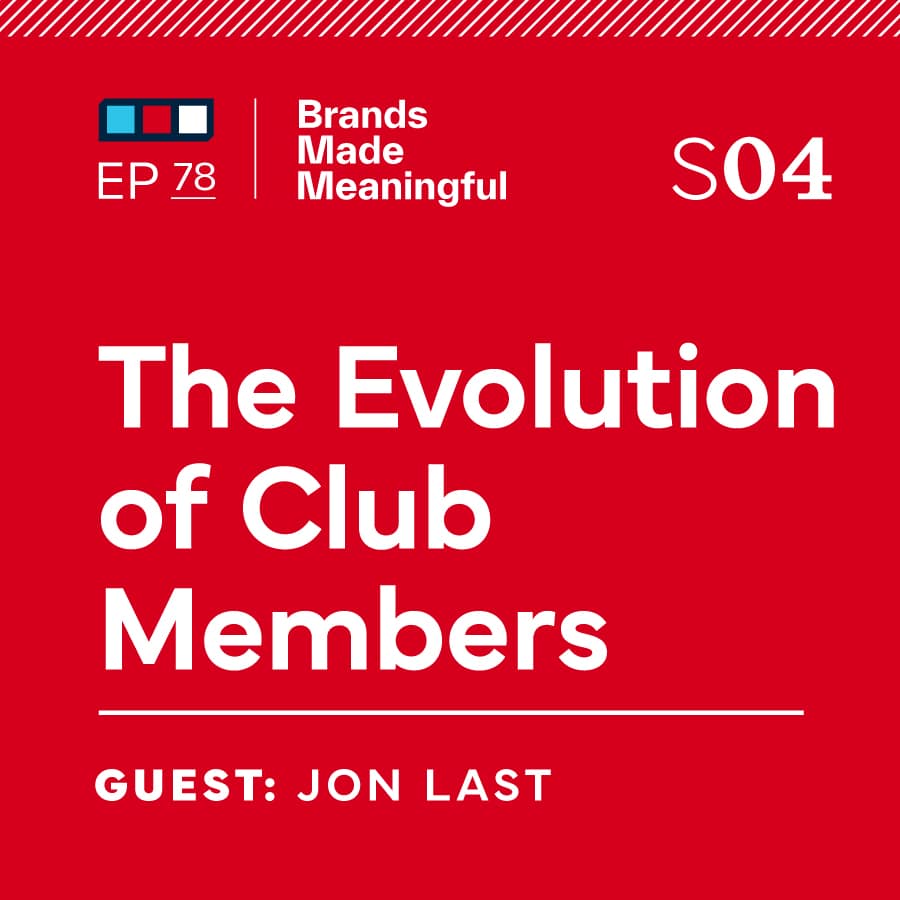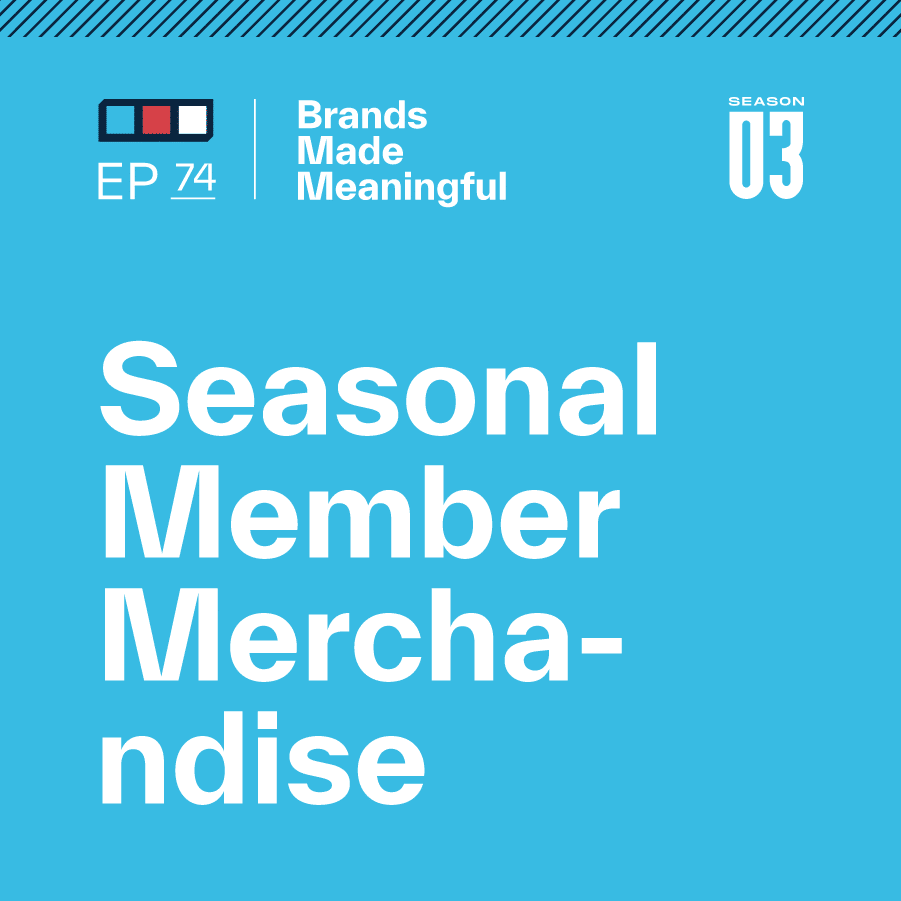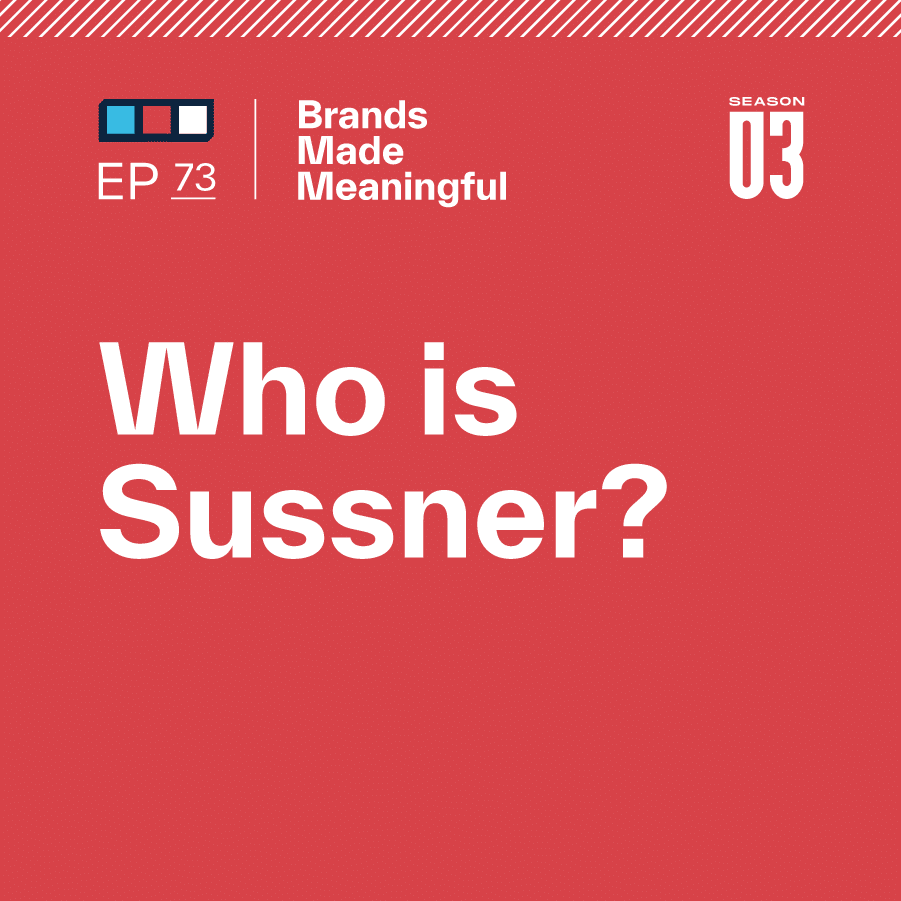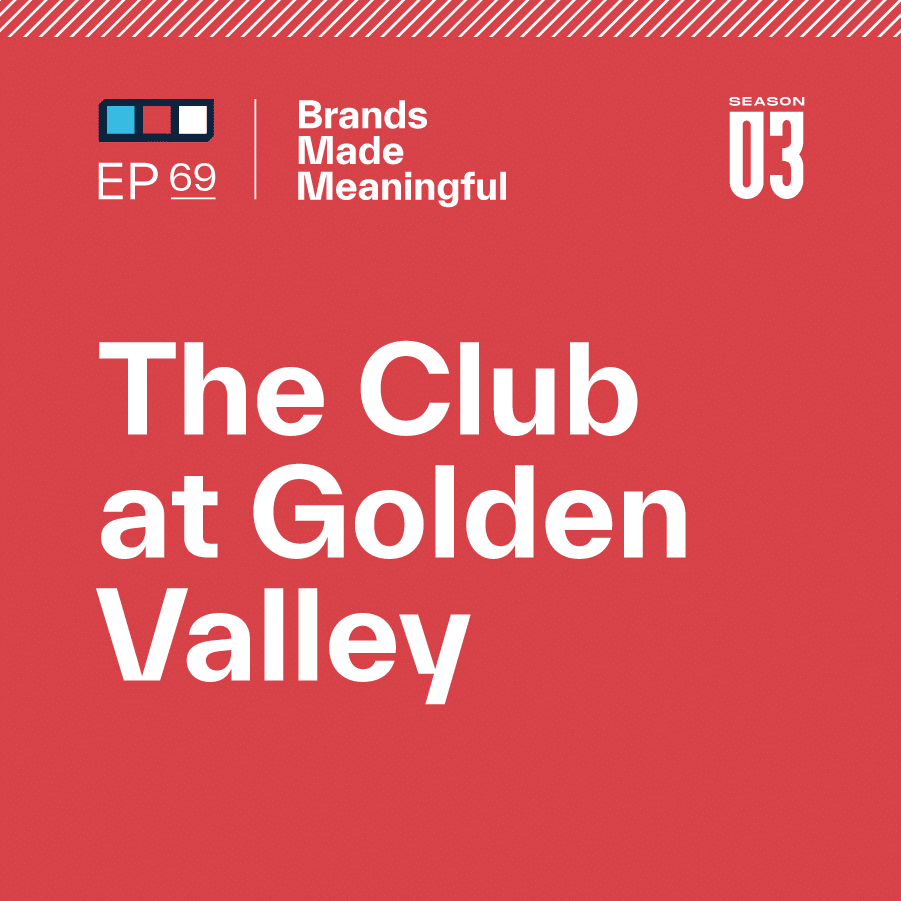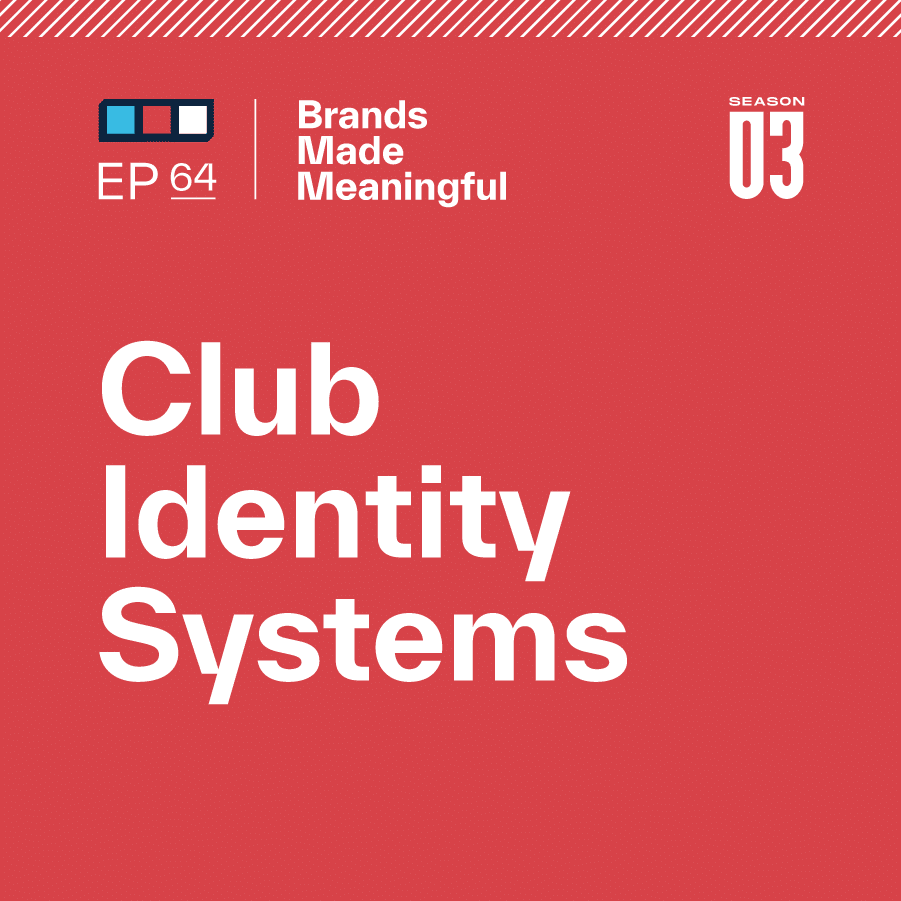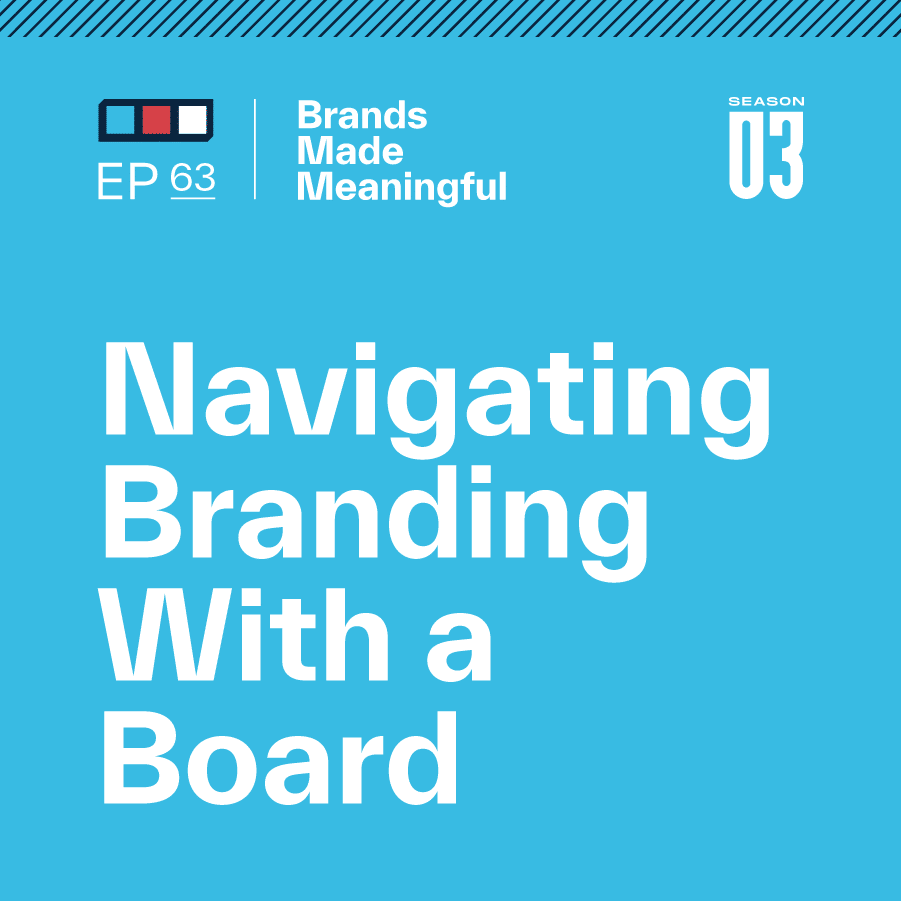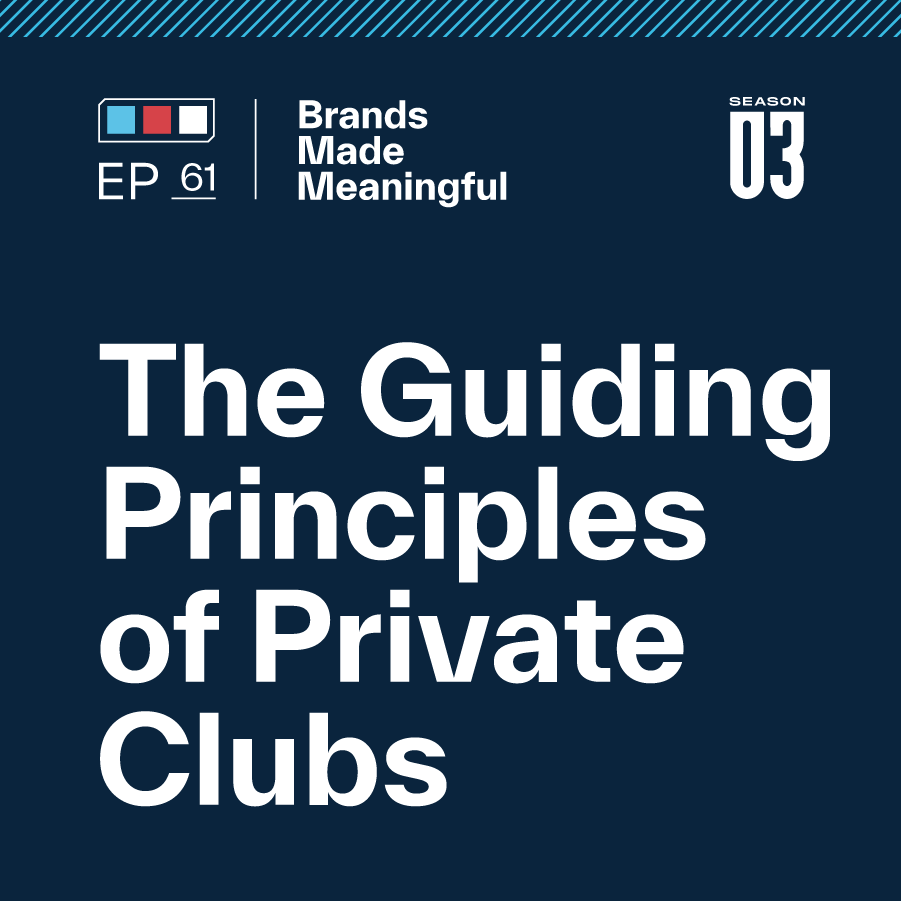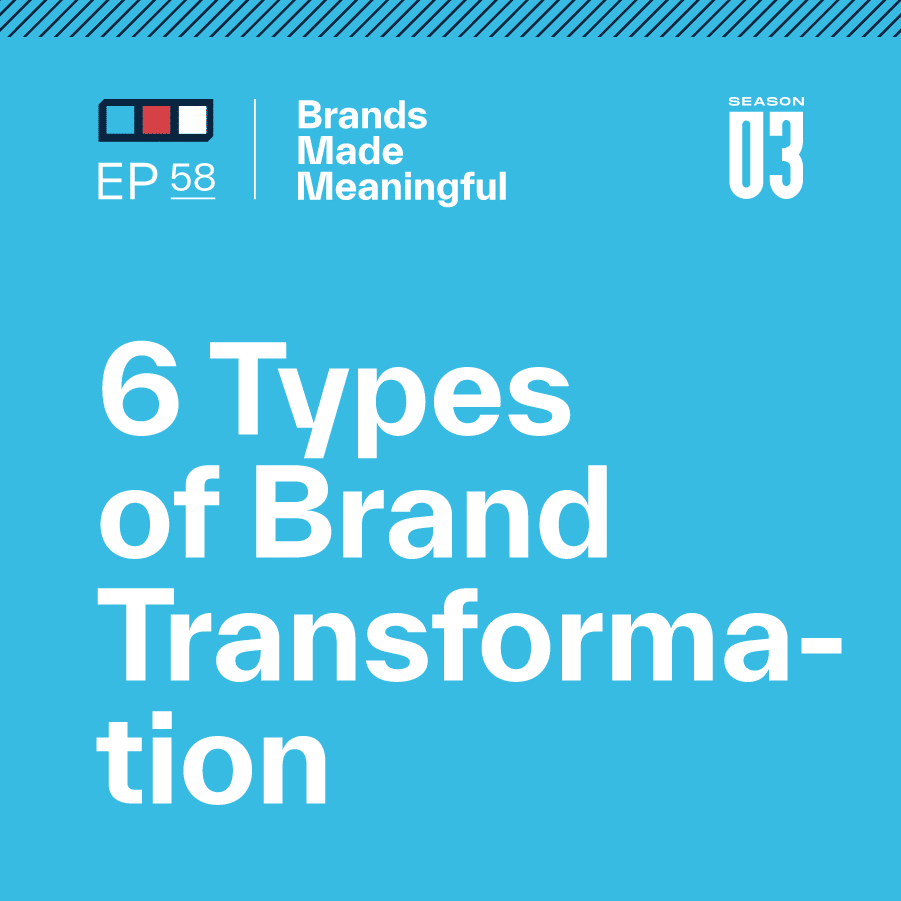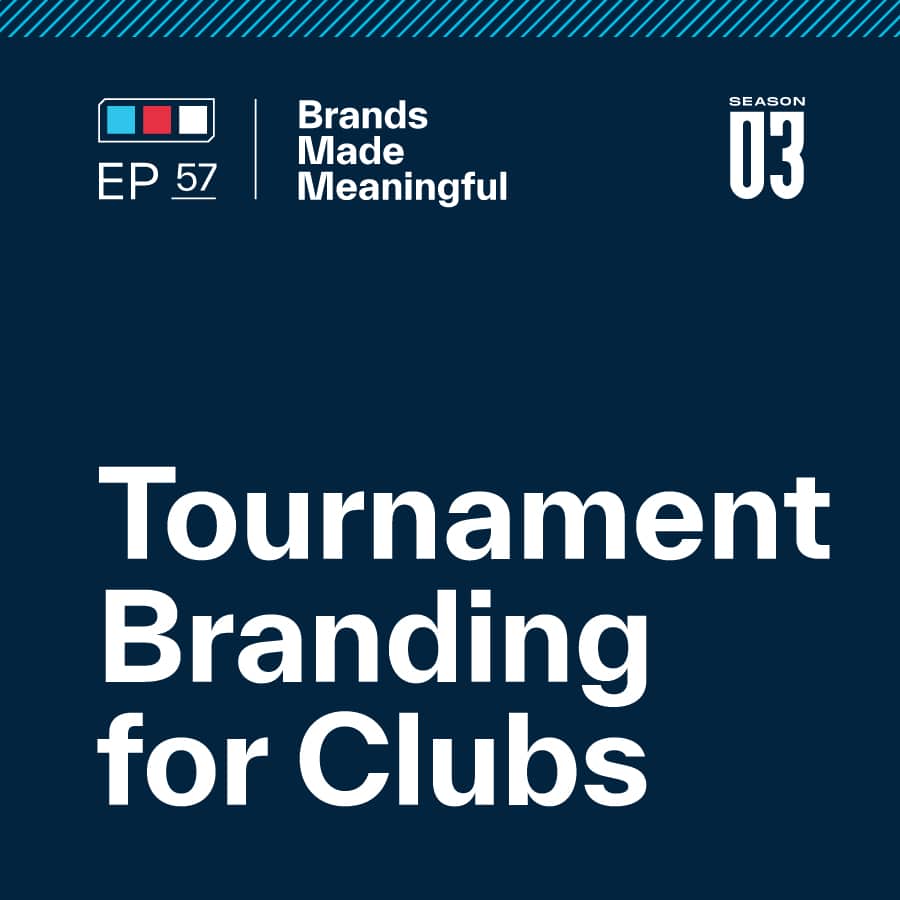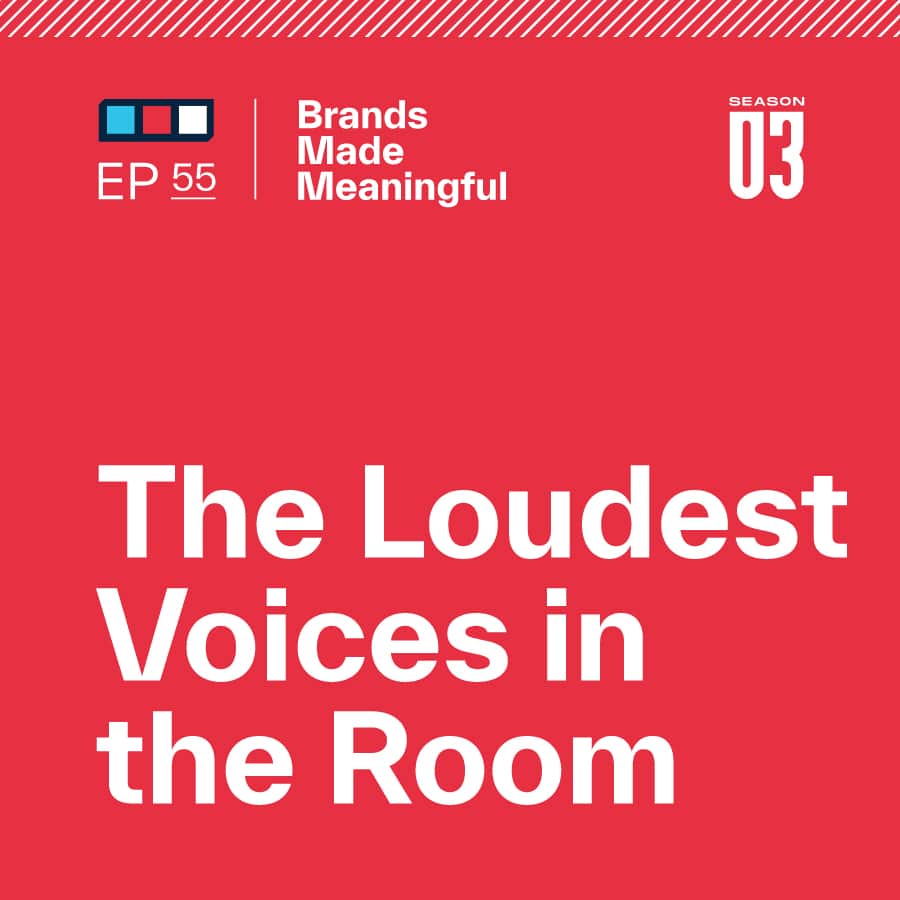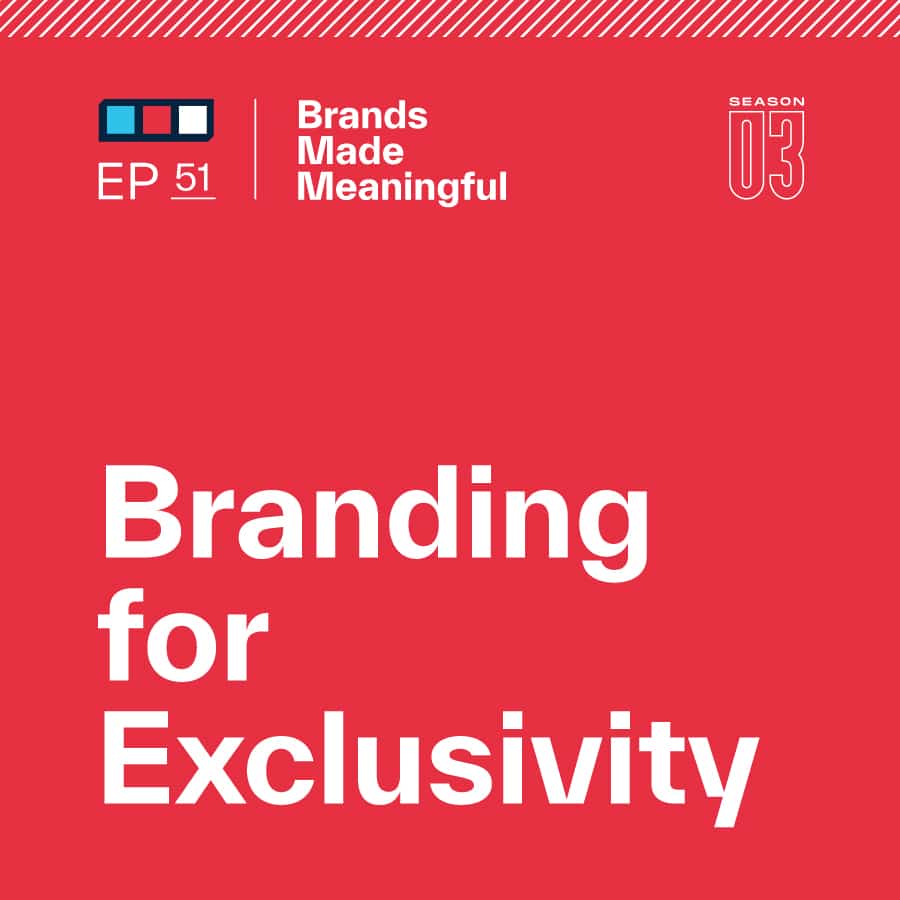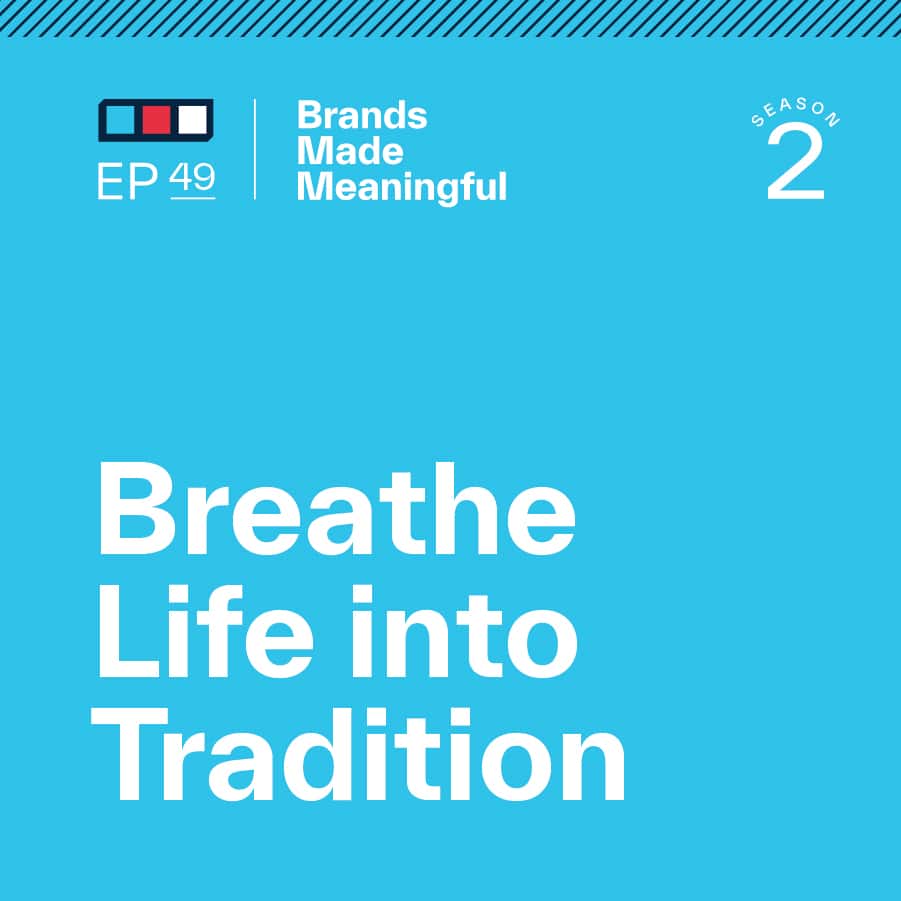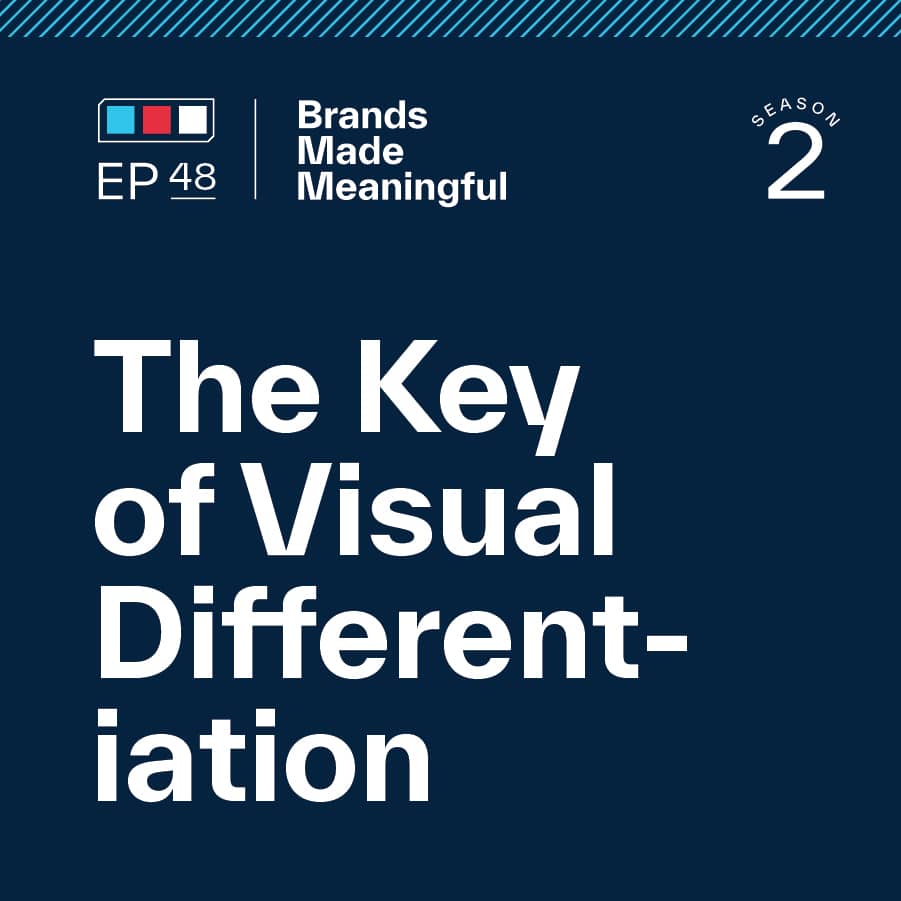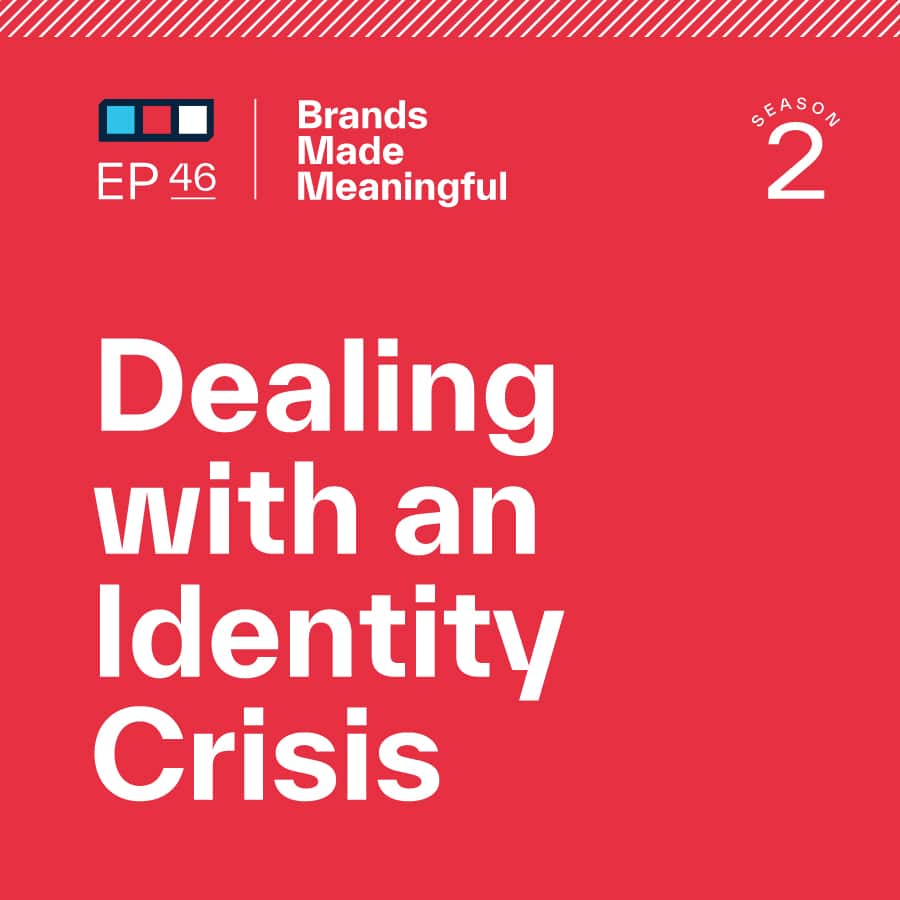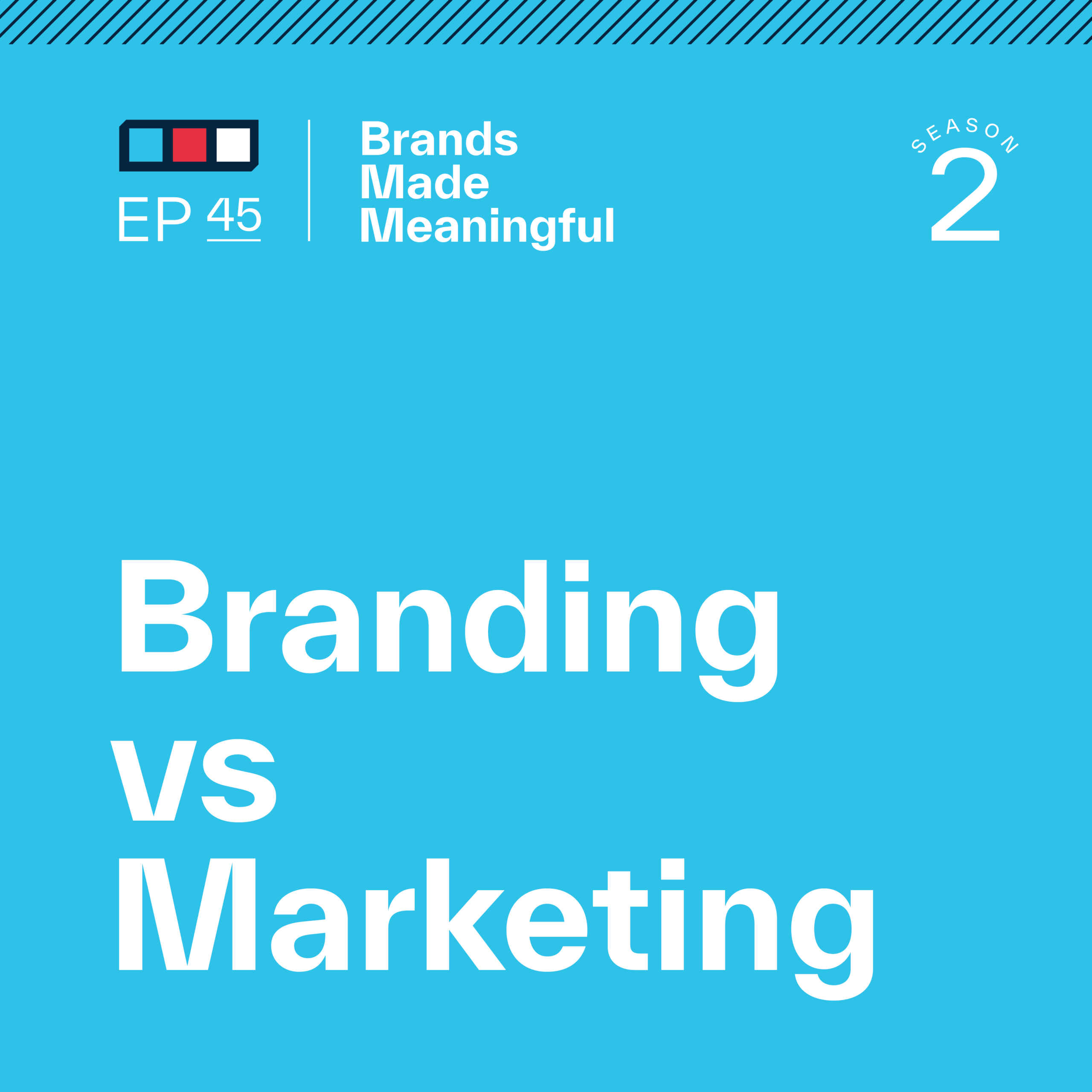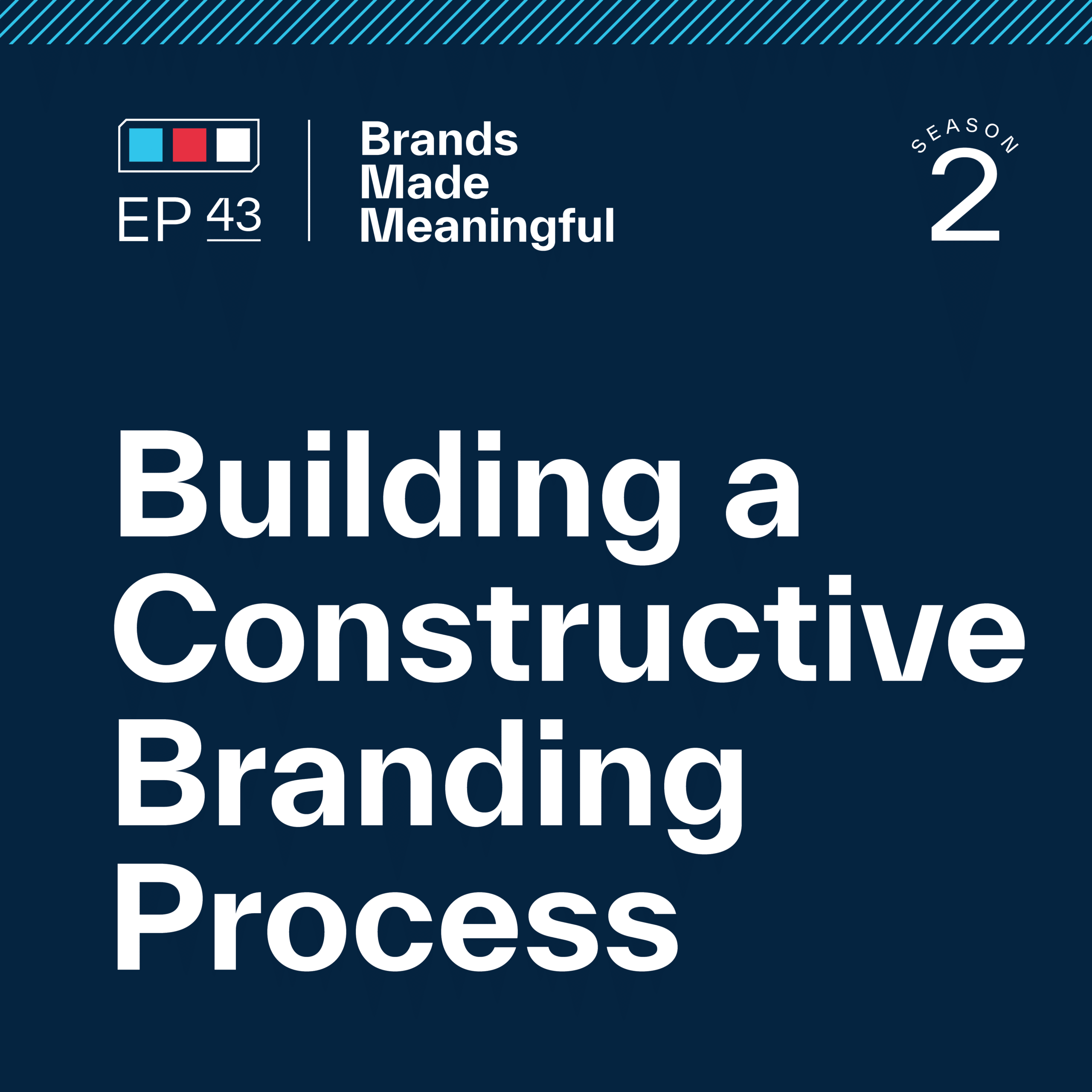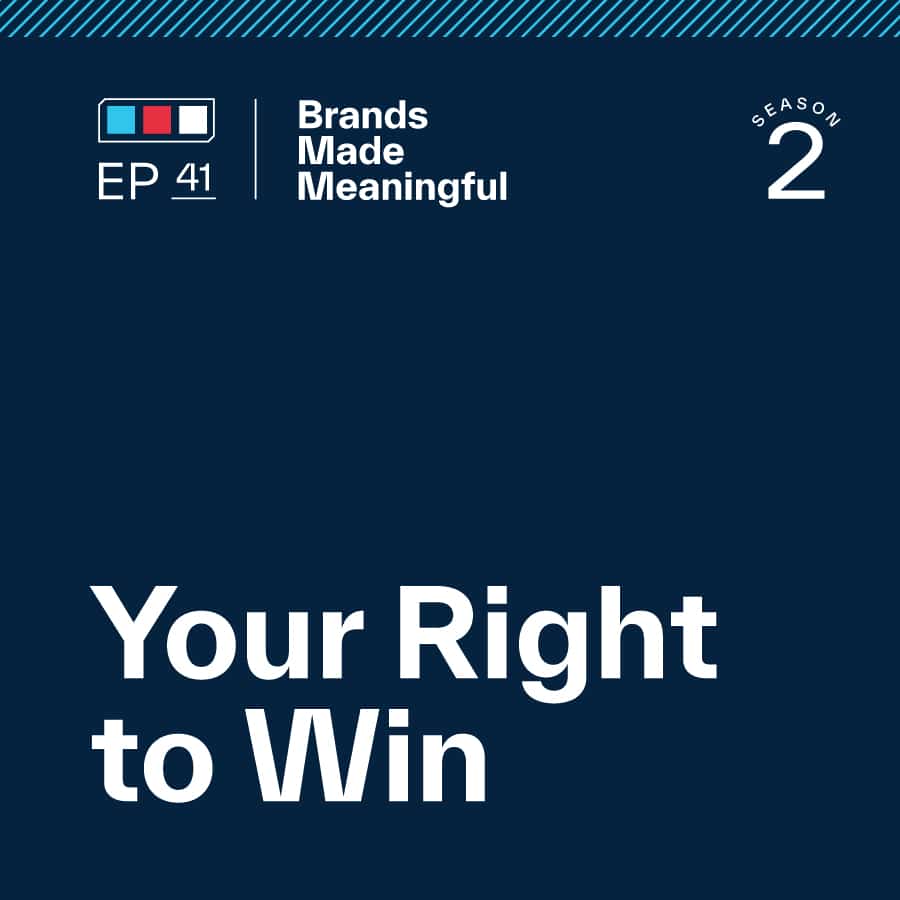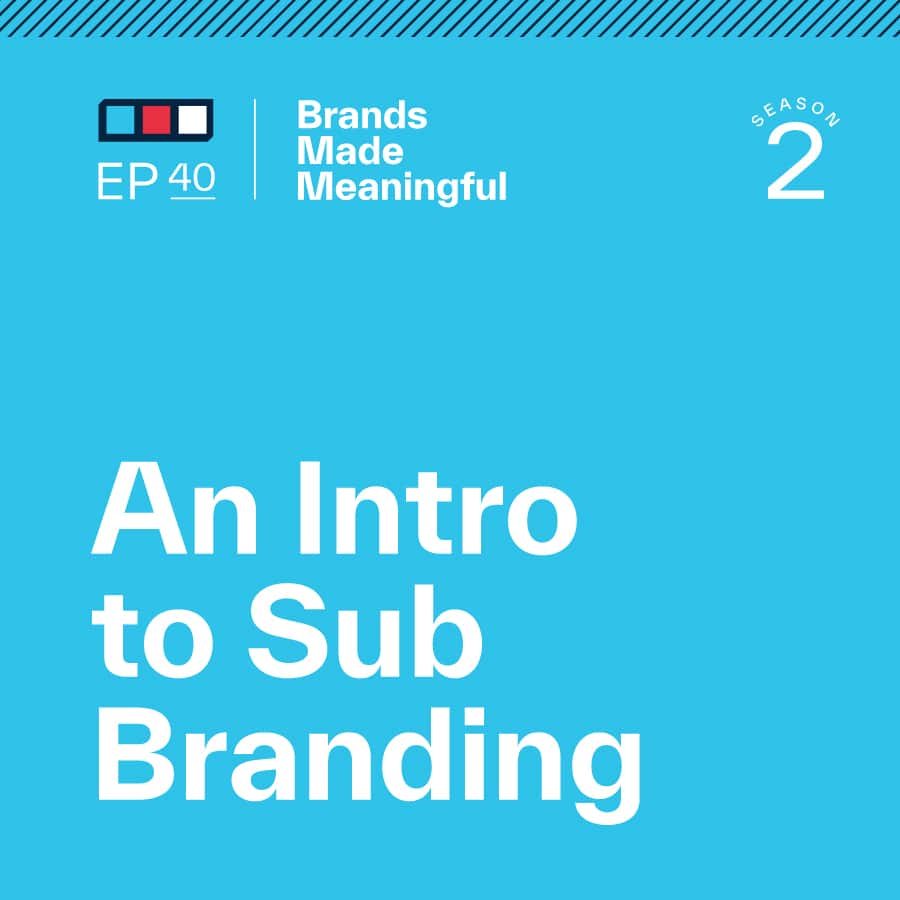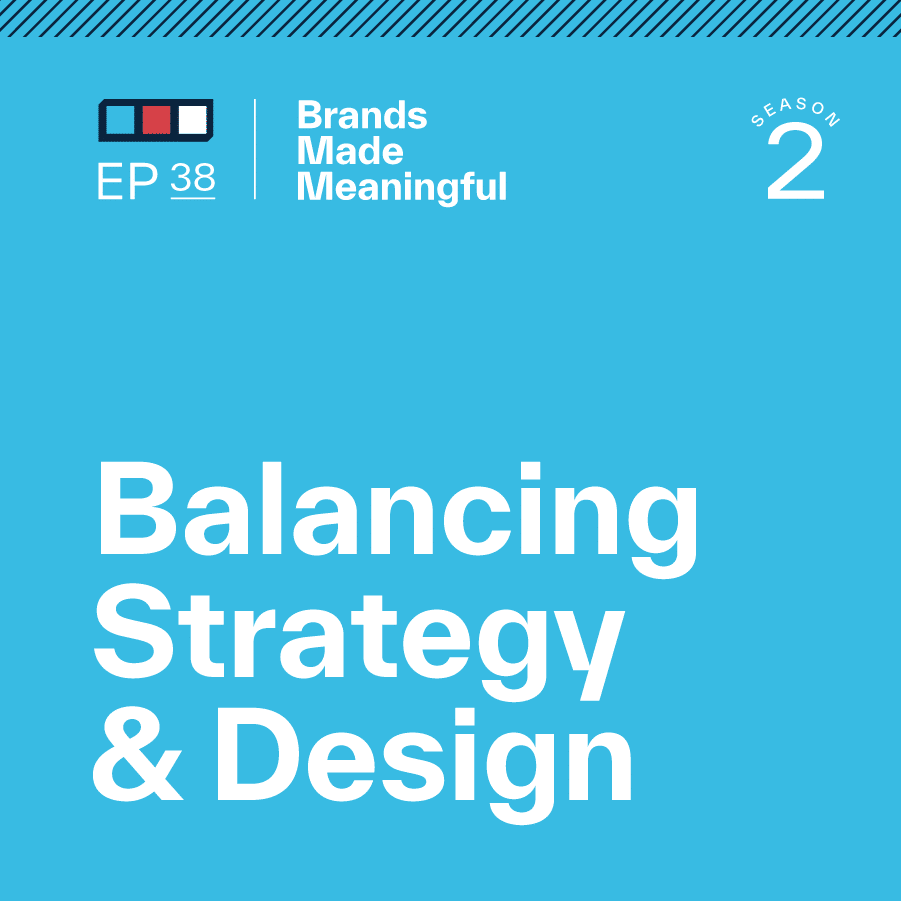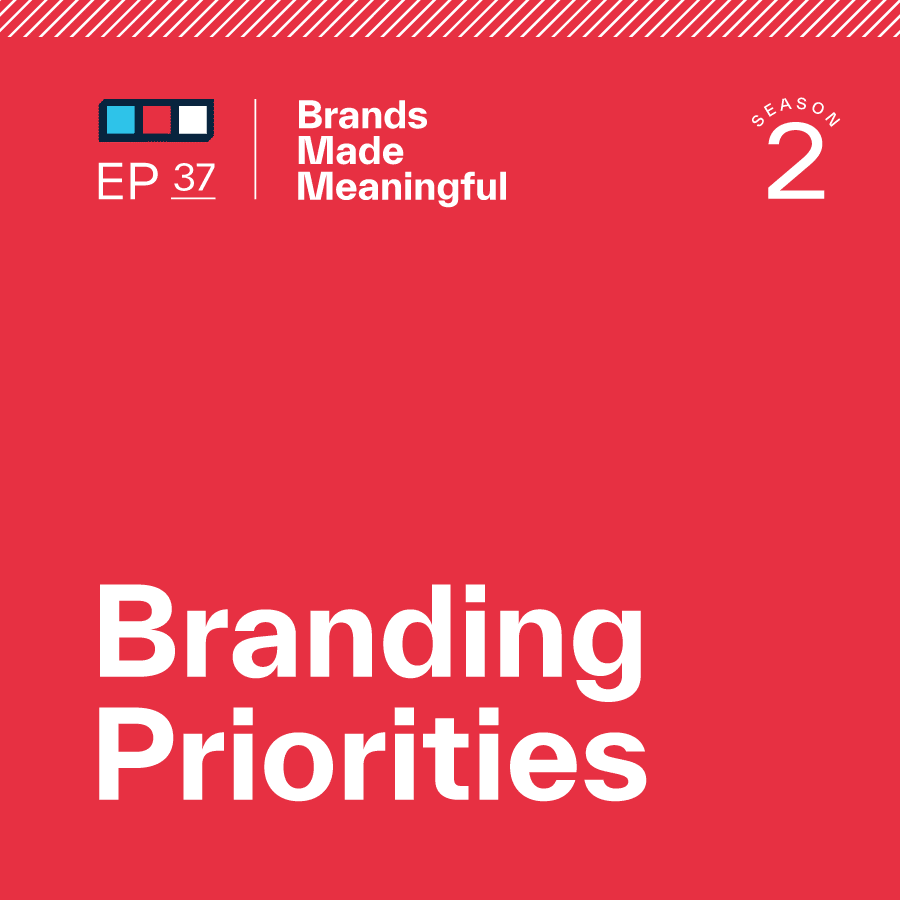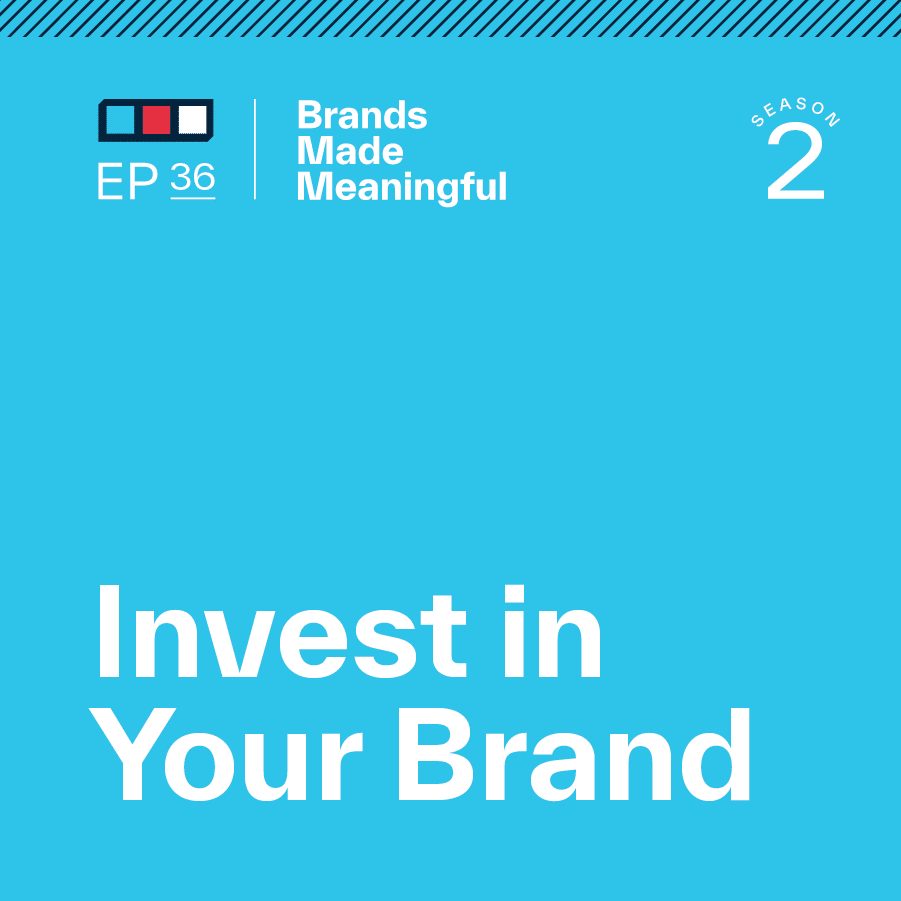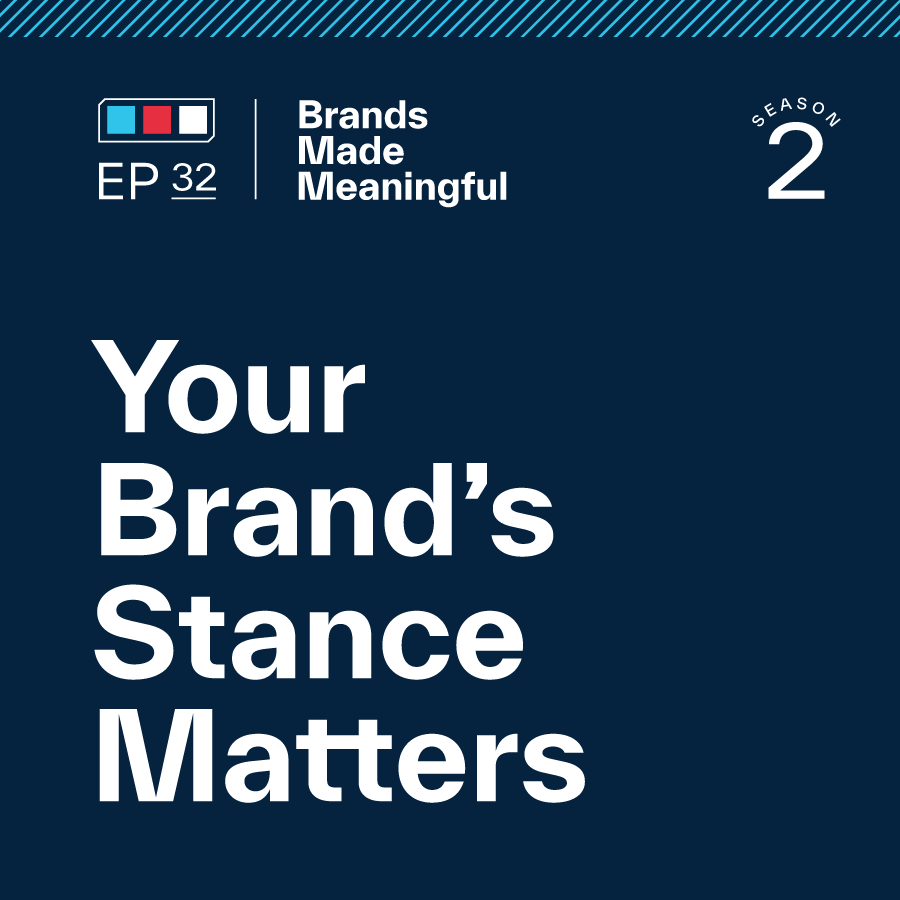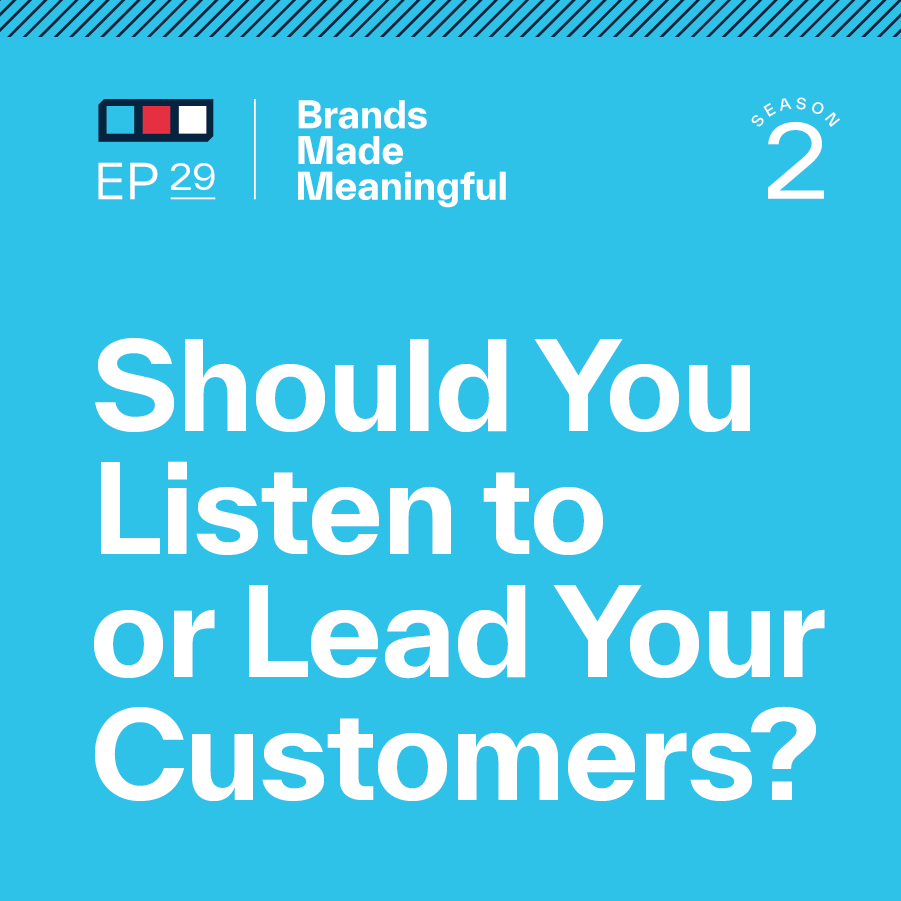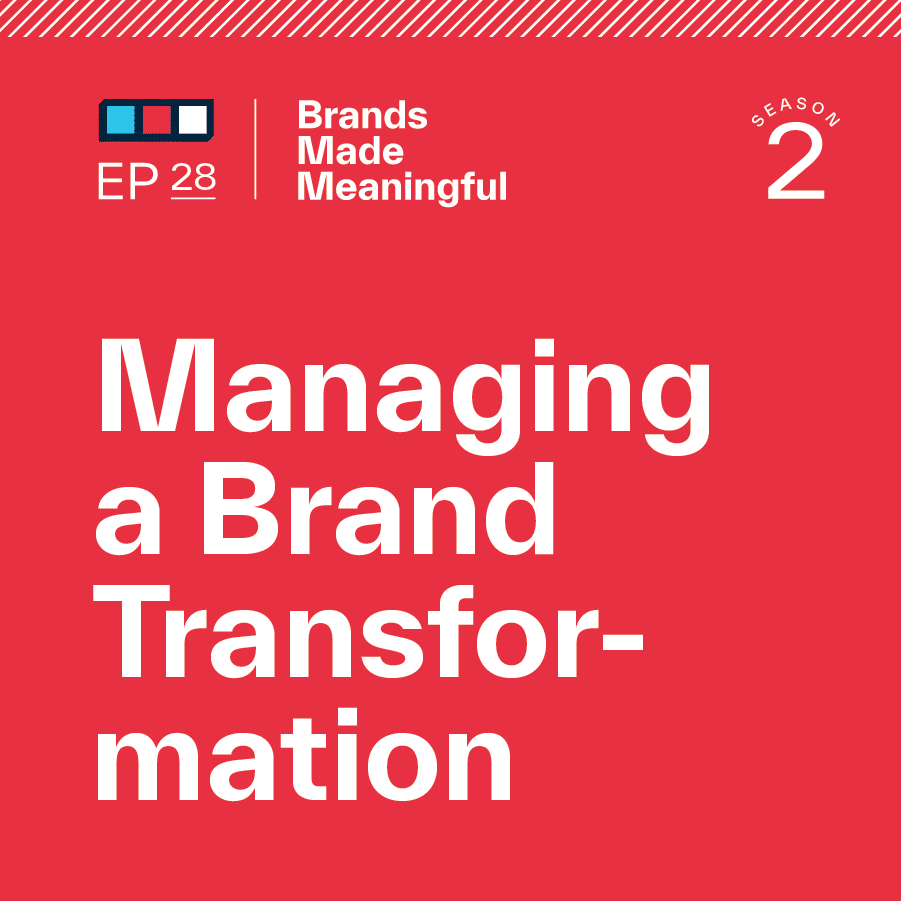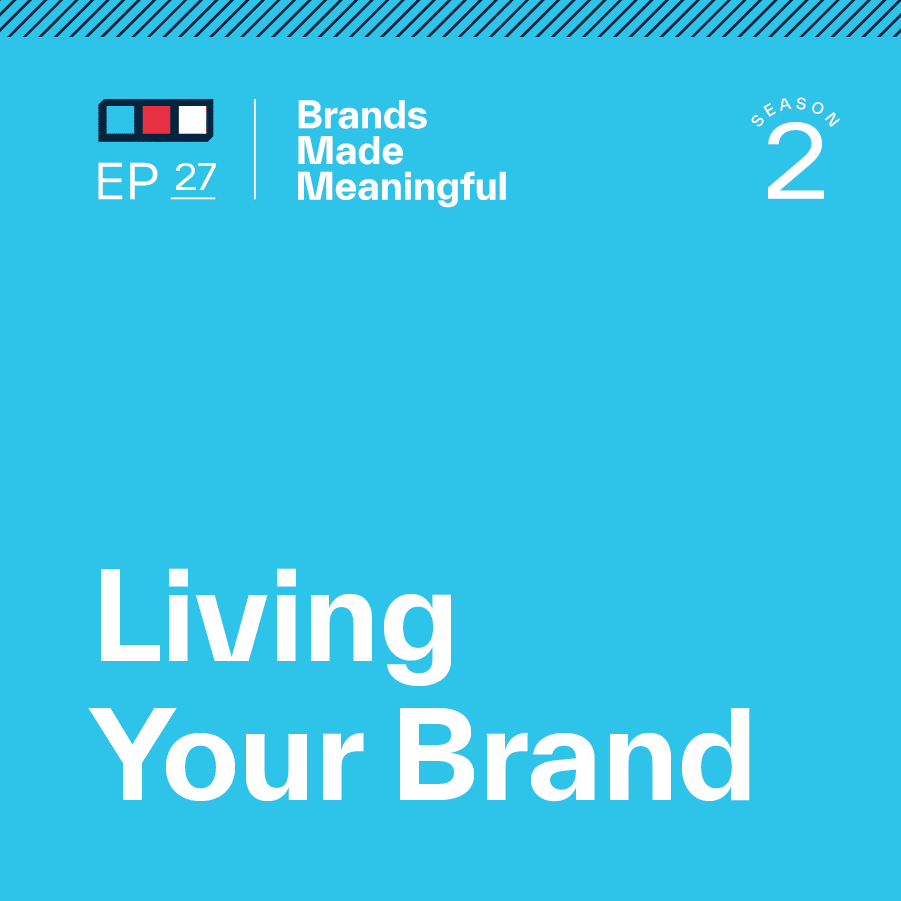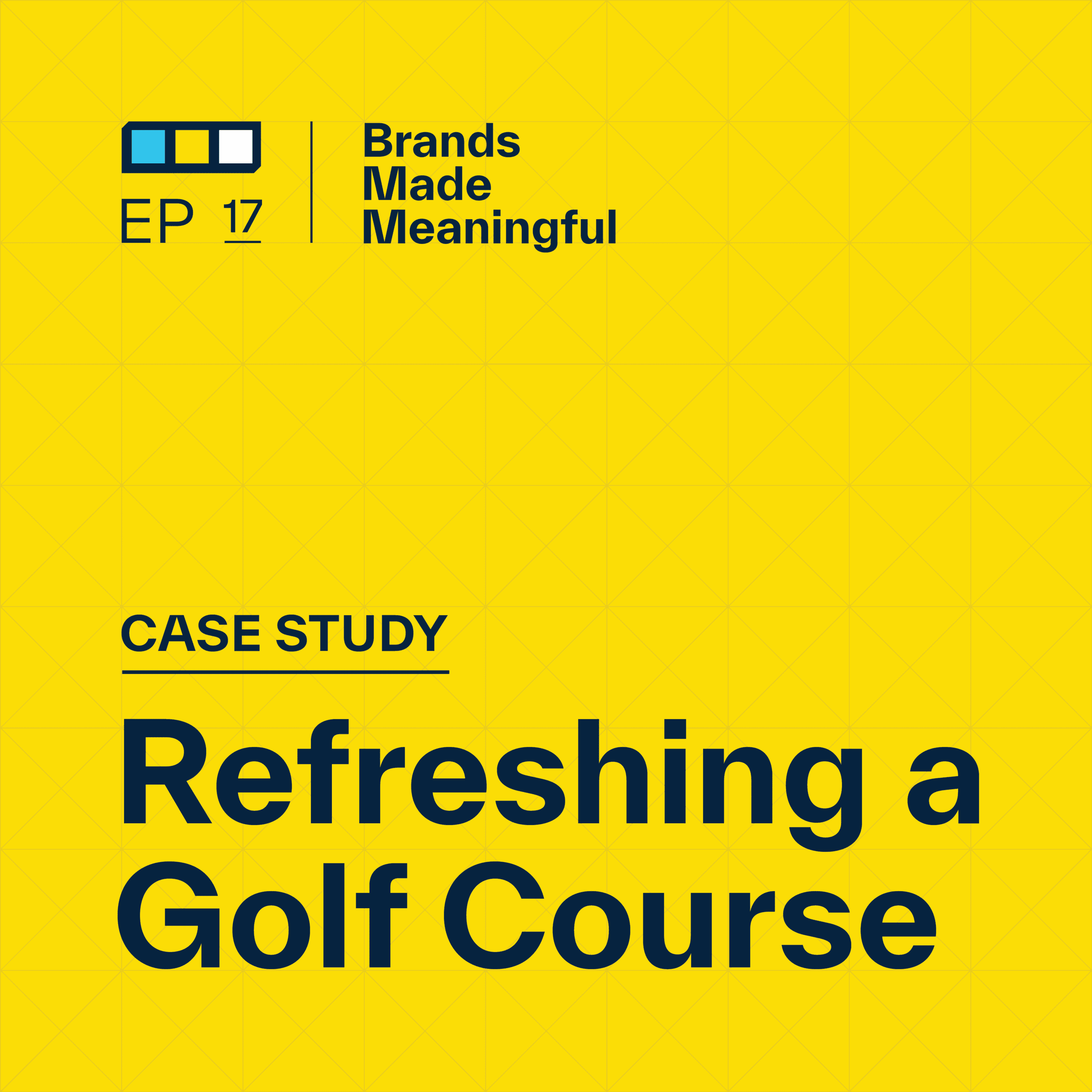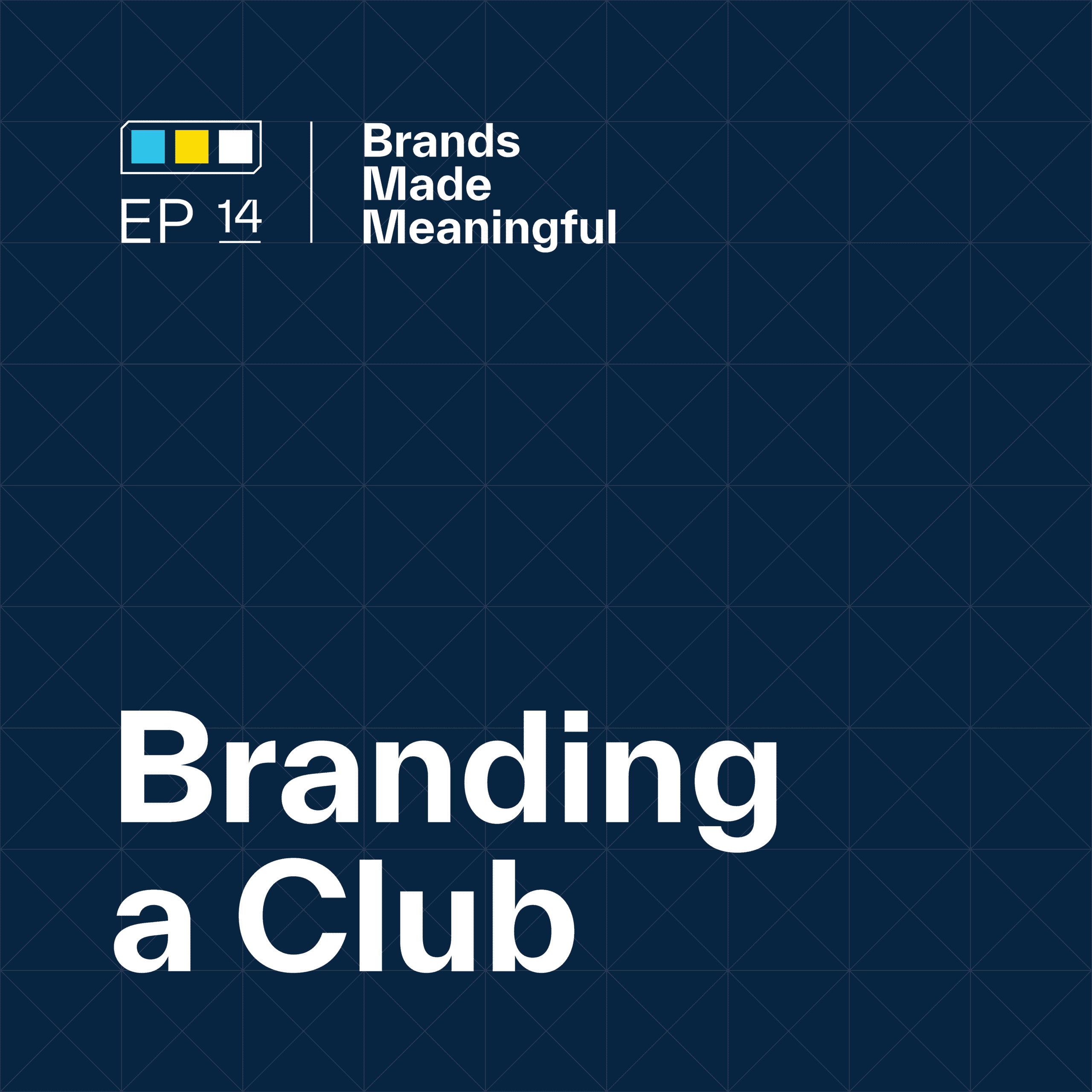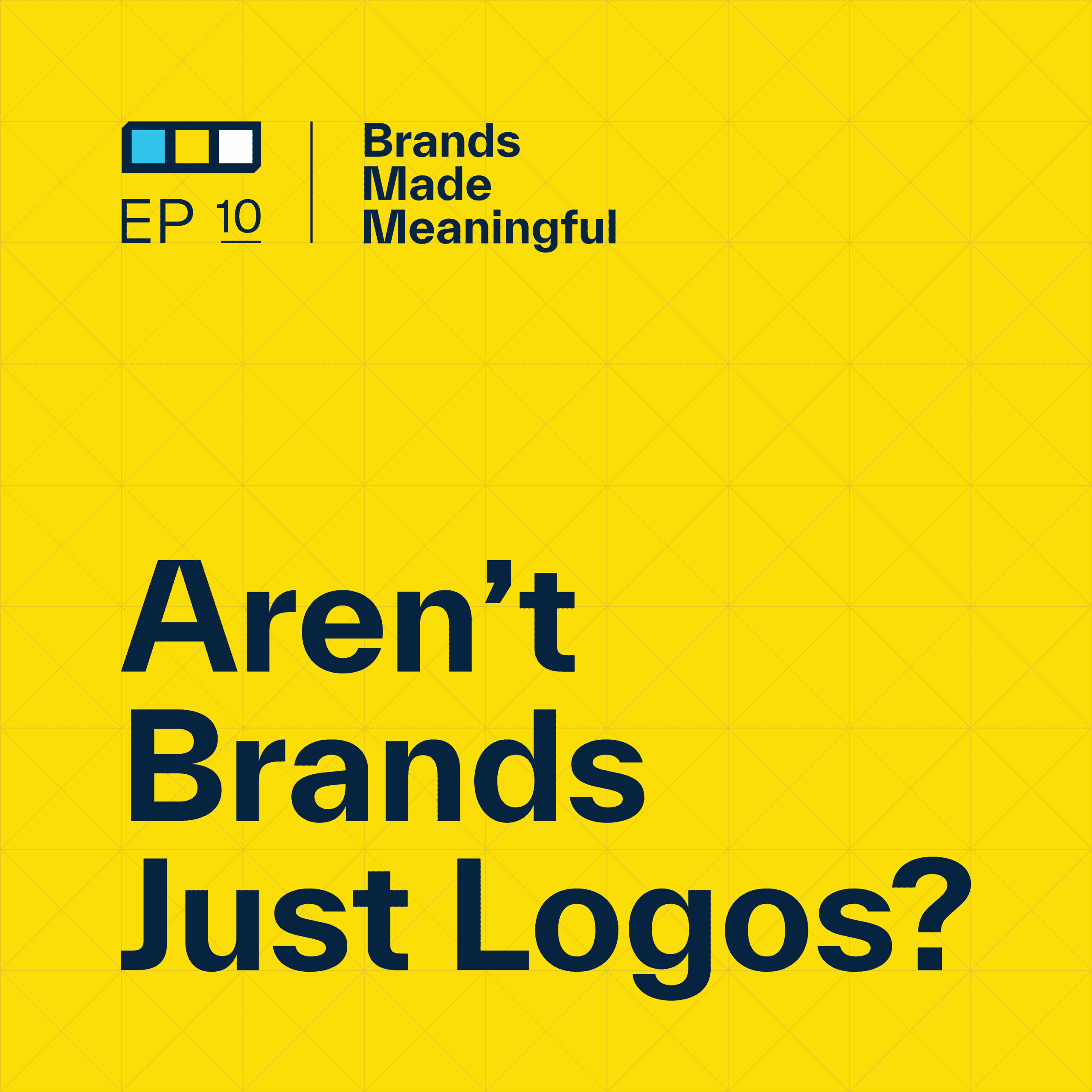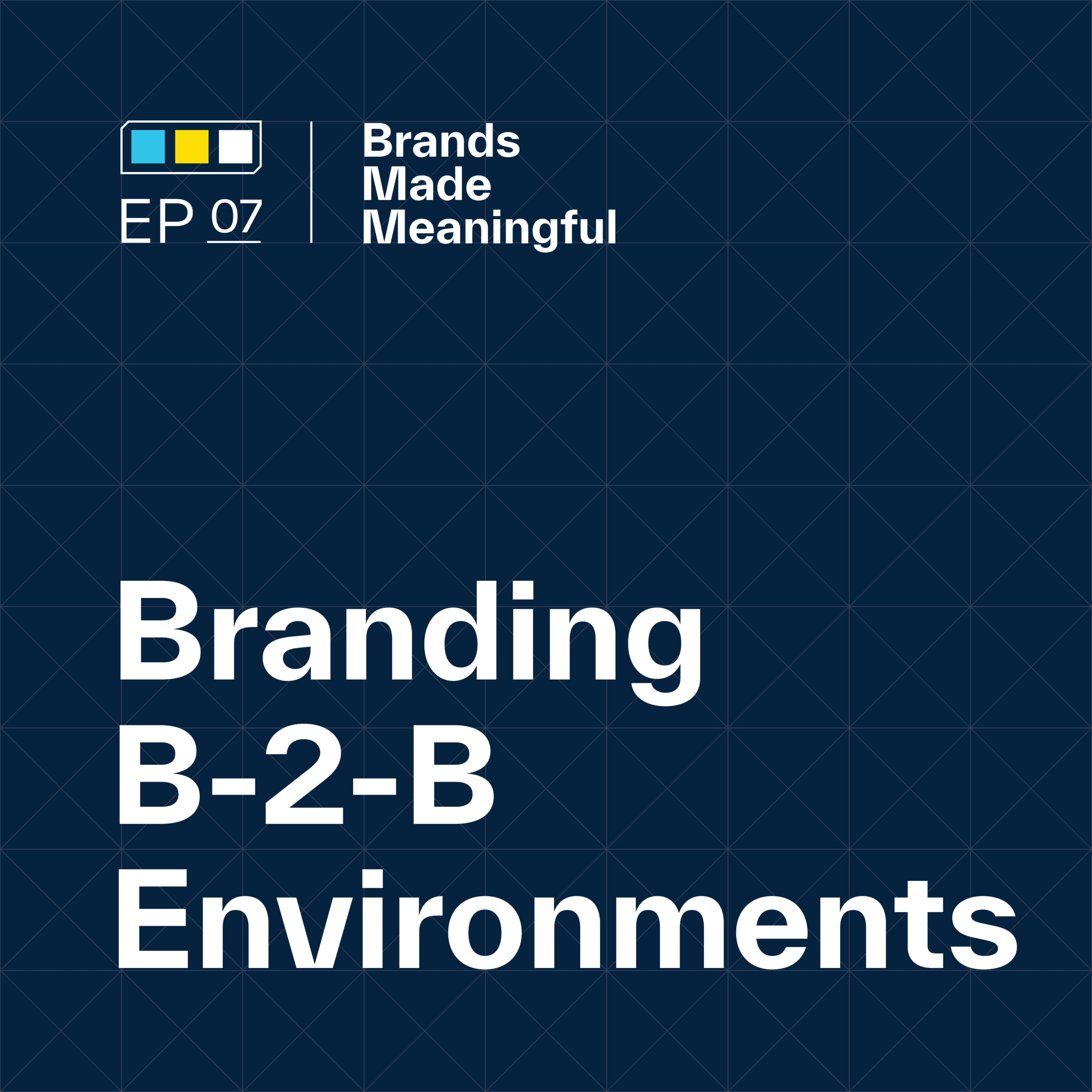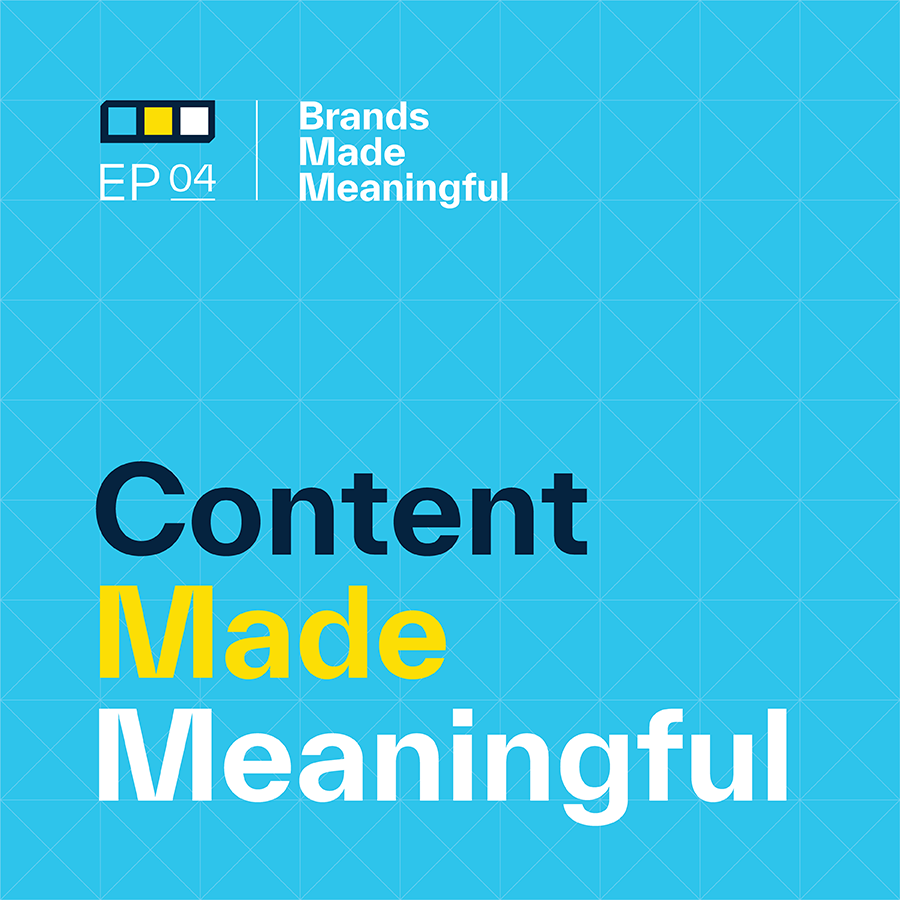EPISODE 21

Refreshing a Sporting Goods Brand
Episode 21
This episode shares the steps behind Sussner’s work in refining the Shock Doctor brand to guide packaging, merchandising, and marketing and to reaffirm its position in the sporting goods market.
EPISODE TRANSCRIPTION
Today we’re talking about mouthguards.
Tucker Well, not mouthguards, but a mouthguard brand. They do more than mouthguards. We’re talking about Shock Doctor. We’re going to do a case study and walk through some work that we did with a sporting goods brand a couple of years back. But the story is really applicable to the way our clients come to us with problems that aren’t necessarily rebranding them.
Expand Full Transcript
Derek Often when we engage in an initial conversation with a company or a marketing leader who is in charge of a brand and comes to the table with a problem or a challenge around growth or sales or launching a product, one of the key topics, one of the key things that comes up in every one of those conversations is the existing brand. Most of the work that we do is in revising, refining, and refreshing brands that have a history, have some story, have some background, and some reason they need to shift, adjust, update and tell a better story. And so one of the questions that always comes up is our current logo, our current brand, our current messaging, what’s still valid, what’s not, and what needs to be readdressed.
Tucker I think the concern a lot of our clients give us is that we don’t want to get rid of anything. We spent so much effort, blood, sweat, tears, and money trying to craft what we have today. We don’t want to get rid of any of that, which is totally understandable. But the challenges are the challenges. So I think this is a great example. This Shock Doctor example is a great example of a time when they had a challenge and the solution wasn’t to tear everything down and build it new. So let’s get into it. We’re not going to waste any time here. What was the challenge that Shock Doctor came to us with?
Derek There’s a little bit of backstory here. We had been doing a bunch of work, branding work, and rolling out packaging of new brand work for a sporting goods company called McDavid. And at that time, McDavid was headquartered in Chicago and Shock Doctor was headquartered in Minneapolis. They were similar in size, had a lot of crossover in product offerings and McDavid had targeted Shock Doctor as probably its main competitor in the market with somebody who was doing a really good job with where McDavid wanted to go. And after McDavid’s rebrand and a couple of years of really strong sales success at the retail level with customers with their new, more up-to-date, refined, aggressive performance-looking brand, they did overtake Shock Doctor, in their minds, based on some of their key metrics. Well, behind the scenes, what we didn’t know, was that Shock Doctor’s parent company, which is called United Sports Brands, was actually negotiating to buy McDavid. Which they did. So now the whole conversation changed. Now they are our sibling or our partner. And now what do they look like? So now the marketing director that was at McDavid assumed the marketing director level over Shock Doctor also. So now she was looking at two brands and she was tasked with telling two different stories and basically figuring out the brand architecture between the two so they weren’t cannibalizing each other’s businesses.
Tucker So the story we’re going to tell today is of the Shock Doctor work, but the overarching story is the United Sports Brand’s architecture strategy. What are we doing? How are we coming to market in all these different areas? What are the audiences? That’s a story for a different day. So Shock Doctor had this thought of competition with their top competitor. And that competitor turned into a partner or a sister brand. So now we need to not compete with them but work with them to capture either variation of the audience that we’re going after or a completely different audience that we thought we were going after.
Derek Exactly. So Shock Doctor makes all kinds of protection and performance sporting goods products, but their primary product line is mouth guards, protective dental wear that’s required in a lot of youth sports. Football comes to mind. I remember standing in front of the retail wall at Dick’s Sporting Goods with my, at that time, fourth-grade son trying to pick out a mouth guard. And it’s overwhelming the quantity of styles, fits, flavors, and colors – super hard to do. But ironically, that was the problem that Shock Doctor first came to us with. They said our product line has grown. Basically, we’ve lost control of it. We’ve got tons of different types of packaging. And we’re having a really hard time clearly and quickly connecting with our customers at retail who come in for a mouth guard to help them know which one it is that they need so they can make that purchase and get on with their day and not to confuse them, not to overwhelm them. So that was the primary task.
Tucker So it sounds like when they came to you with this problem, they had a fragmented brand.
Derek That’s a great word for it.
Tucker They had way too many offerings or maybe they had so many offerings and not enough clarity or a throughline between them to connect them, making it easy for people to understand. This is a common problem. We have people come to us all the time that say, my marketing is fragmented or maybe my messaging is fragmented. We had so many value offers that we don’t really have a throughline. We don’t have a connection. And so for them, it was their product lines. How did you solve that? What do you do when someone says, we have a fragmented brand? What do you say? Your first step is to go, okay, do you take a lay of the land?
Derek We have a process that we follow. We have a five-step process that we go through with every brand that we work with. And each of those steps guides us to make sure that we’re looking at this the right way. I think there’s a tendency to go straight to what we consider step four and just start designing new packaging and just start to flush this out visually. But we realized that, because Shock Doctor had grown very successfully, they’ve claimed the number one selling mouth guard in the United States, if not the world. It’s an extremely successful product. They own the market and the technology behind their R&D and development is second to none. And so they had grown so fast they had grown out of control. And to understand all the features and benefits of the product line, which is, I think, how we would normally have wanted to start to really dig in to see what this looked like, required us to take a little bit of a pause and audit the whole system. We really needed to understand what their challenges were to help us navigate what ultimately the solutions were that we would recommend. So we needed to do a discovery phase and we needed to understand, more than anything, what’s the story, what’s the essence, what’s the perception of the personality of Shock Doctor, especially as compared to their now sibling brand McDavid.
Tucker When you see a fragmented marketing place or marketing department, all the different offerings that they have, our first question is almost always, Well, what’s the central idea? If you’re so fragmented, that means your central idea either, one, isn’t strong enough or, two, isn’t being applied the right way. And that’s a key difference. Whereas someone who might need a whole new rebrand probably has a positioning problem. They probably have a different type of problem in their arsenal, whereas a fragmented problem is much easier to say, Okay, how do we do that? But the hardest part for most marketing departments is to stop and look at everything. You know what the problem is but that doesn’t mean you know what the solution is yet. I think that’s a huge challenge.
Derek Shock Doctor and McDavid both relocated to their new home in Southern California, along with the handful of other brands that United Sports Brands also acquired. And they are still needing to do work. They’re still needing to market, advertise, and support their current work. The fortunate thing for them and for us is that the marketing leader on that team had just come out of successfully leading a similar challenge in charge for McDavid. And so she knew that for Shock Doctor to be able to execute successfully for the long term, not only at retail but also in the marketing channels that led the customers to those retail environments, she needed to get that story, that central idea in place first.
Tucker So let’s get into that a little bit. What happened when you got to looking at everything? You get a good lay of the land. You know what the problem is. What was their central idea or what is now their central idea around this product?
Derek Innovation. Innovation for them was the throughline with all of their products and with literally their mentality. We hear the word innovation all the time. I don’t know any company that we work with that doesn’t want to be seen as being innovative, especially somebody who is rolling out very high-performance products. But the difference between where McDavid leaned into the emotional aspects of what their products do for them, and Shock Doctor leaned into what had gotten them to being the number one player, that was to tell the story of performance through innovation.
Tucker It’s interesting to note that Shock Doctor is actually innovated. I see it right on the board here. Since 1992, they’ve actually led the industry in innovation. And I don’t know how they measure that. But if you are saying that that’s kind of a part of our history, right? That’s 30 years ago. But for 30 years, we’ve been innovating and we’ve been innovating while the market has shown that we’ve been doing it well. I think it’s a lot easier for a brand to rally around innovation if that’s what you’ve done for the last 30 years. Whereas we have clients who say we’re very innovative, yet we have never really been innovative before. That’s a whole other challenge. But for them, that story is so familiar and it’s to say, how do we then take that story and apply it across all of our fragmented products?
Derek And layered on top of that, one of the problems that we discovered through our work with them was that while their partners, retail partners, recognized them as a leader in innovation and in performance, the athletes and oftentimes the parents of the athletes that were going to the store to buy the product had low brand awareness of Shock Doctor. And as they rated it in their own surveys, the “cool factor” was very low. Sports are cool. And if you’re walking into the store to buy a sports product and that sports product doesn’t convey the coolness of the sport that you’re in there to play, that’s a problem.
Tucker When you think of the word innovation, you think of cutting-edge, new. I think of pushing the envelope and moving that forward. So how does that come into play when you’re looking at all the different products? How do you start conveying that? How do you convey that to customers?
Derek An exercise that we did around not only what perception should the Shock Doctor brand convey to differentiate itself and to improve the cool factor and to connect with its target market, but also at the same time to differentiate and separate from its sister brand McDavid. McDavid does not sell mouthguards, but McDavid and Shock Doctor do sell a lot of very similar products in other categories. So there’s that differentiating challenge too. The one thing that we realized that Shock Doctor had not been doing in telling any of their stories ever was telling a human story. They only told a story of features and benefits. And the common denominator for all of their products are the people that wear them, that use them, and why. What does having the protection of a mouthguard do for you beyond just literally protecting your teeth and your face and your well-being? It was digging into that aspect. And what we landed on for our brand essence for them was the word fearless. When I’m wearing the mouthguard specifically, that gives me confidence and poise.
Tucker Fearless.
Derek I know that I’m safe and I know that I’m protected. I can get in there and focus on doing the sport that I’m here to do that I love. McDavid’s brand essence is confidence, Shock Doctor’s is fearless.
Tucker Similar then.
Derek Similar but nuanced. And then the nuance became, And what does that then look like visually? From a look and feel standpoint, what does fearless look like for Shock Doctor?
Tucker So you have this new idea, this is fearless. We’re doing this, here’s our story, our storylines are all focused on innovation and what that all means. How do we move forward? I think some people would then go, Okay, then you redid the logo, right? But that wasn’t a part of this. That wasn’t on the table. That wasn’t their problem. I think a lot of people, especially in the design world, would say, Here’s your problem. Let’s just redo it all. And I think then saying, Nope, you have so much equity in that that you don’t need to change the way you look, but you do need to change the way you convey yourself.
Derek And we did. We looked at it. We looked at the logo and the tagline and some of those key brand components and had some really good conversations about whether or not those pieces should be addressed. And for Shock Doctor, no, they didn’t need to be. They’d already been refined and fine-tuned by their team over the years and already did a nice job of conveying ultimately what we think it needed to. And then keep in mind from a business standpoint, that logo is on thousands and thousands of items and packages and products.
Tucker And molds. And you think about how much money it would cost for them to swap that. It’s definitely an investment that would change a lot of things.
Derek So their logo was rock solid. And so our job became to then, underneath that badge, underneath that symbol, how can we bring a human story to life that creates the look going forward to help update marketing materials, product packaging, etc. underneath that Shock Doctor banner.
Tucker So, moving forward, you have this whole thing. You’ve already looked at the visuals and said, while the visuals don’t necessarily need to be redone, there does need to be some kind of clarity built into the visuals. We already talked about the story. We already talked about the messaging. We’ve talked about that stuff. From a visual standpoint, was there anything that really stood out as this really helped clarify that fragmentation?
Derek We ended up going through the exercise of putting together a mood board, a style scape, a visual art direction. The most substantial part of the refinement that came out of the Shock Doctor piece was an updated look. Shock Doctor’s brand color is orange and orange is great. Orange stands out in the market. It stands out on the shelf. It’s different than their primary competitors. They were never not going to be orange. But the way that they’d presented themselves with the colors that they had surrounded that orange with and trying to tell stories of flavor or protection levels or different product body types, those other colors got really dark and muddy and there became so many of these colors. When you walked up to them, and I can’t show the audience this, but we’re looking at a picture of it on the wall – if you walked up to the retail wall at Dick’s Sporting Goods and looked at the hundreds and hundreds of mouthguards that are on that wall, and when you walked away, I said, What was that brand and what was that brand’s color? You’d be hard-pressed to say orange. You’d have been overwhelmed by all the other colors that they had presented themselves with. So there was no brand statement.
Tucker Side note – bad podcasting on our end, reverting back to visuals no one else can see. So pause this right now. Go to the store and then continue listening as you look at a wall of mouthguards.
Derek Exactly.
Tucker We get this question a lot – so we’re getting an updated look – what’s the final deliverable there? Like is the final deliverable a style? How do you convey that final deliverable to someone who’s like, Wow, I’m really interested in this, but I just don’t understand the roadmap here.
Derek Well out of this piece – a mood board – then came brand style guide recommendations, examples, and fonts. We ended up designing, after that, all kinds of social media posts, templates, and examples that said, Here’s the creative direction. Here’s the overall look and feel. But to help explain exactly what that means for you, here’s a roadmap and literally a book. We didn’t work on executing many or most of their marketing materials or their really robust social media marketing plan. But we gave them a roadmap and a template and visuals, not only for the overall brand, but also for a couple of very specific campaigns that they were running at that time.
Tucker I think a part of this could look like actual material building. That’s actually saying, Oh, well, you need a brochure. So we actually do that. The other part of a deliverable that’s a little bit squishier is concepting – to just say, Hey, we did all this great work. We have a new story that we’re telling, we have a new look. We have a whole new set of messaging. And you already have an internal team that does all this. So instead of us doing and doubling up all the work and not utilizing your resources, our job is to inspire the hell out of them and to come to them to say, Here are the new assets, and we call them assets, but you could call them visuals, you could call them messaging, you could call them story lines, whatever you want to call them. But here are your new assets. Go and make something great with them. And here’s an example of that. Not the final product, nothing like that. So that’s one way we could go about it. And then the other way is brainstorming big ideas of, Hey, what could we do that really sets this new stuff apart? And that stuff makes it a lot easier for them internally to go, Okay, I get what you’re going after here. Let’s get to work.
Derek I think there were two or three very specific ways that we helped them implement the updated brand. One was in the product packaging. I started by saying there was confusion at retail. So in working with them, we determined that what was at the time, I’m going to say eight or nine or maybe 12 different categorizations of mouthguards, was refined into four. And across those four, what was, again, ten, twelve different packaging shapes and styles, was consolidated down into two or three. And then iconography, color, and a template all supported, along with some educational graphics, and was all reorganized so that at retail the seven or eight different features and benefits that are included in each one of these mouthguards is organized and sorted in a really, really clear way. So that was one of the executed. Now, we didn’t do the production or execute all the packaging – their team did – but we said, Here’s the master guide. And I would bet that since then additional rules have been added or modifications and adjustments have probably been made as new challenges have been run into. The second way that we helped them was in art directing the photoshoots of their brand ambassadors. Shock Doctor had sponsorship agreements with three or four NBA players. At the time they were the official mouthguard of the NBA. And so while they were running a campaign to promote dental safety to youth basketball players featuring these very, very prominent, accomplished NBA players, the question going into these photoshoots was, What do these shots look like? What’s the attitude that we’re looking for both from these individual people that reflect their own human personality, that’s authentic to them, but how are we doing this in a color, in a style, in an angle, in a lighting that’s going to help us support and tell the Shock Doctor story.
Tucker You said a style doesn’t necessarily mean that they have all of the assets they need to build out. We could give them all of those things. We could give them verbals and visuals and storylines and that’s great. But if you have a team internally that needs support with actual photography, that’s the next thing. So you can kind of see how this process, even though we have a five-step process, there’s no finalized deliverable that’s right for every single client. So moving forward, we have laid out catalogs for Shock Doctor and we’ve done these things that they don’t have the ability to do internally, or maybe they did have the ability to do it internally, but here’s a couple of examples of how to do it. Then what does that look like once the project’s done? You have a style guide or a brand book that just really explains how to utilize all these great new things. What then? What do you do then?
Derek Then we’re done. So for an organization that has an internal creative team that has the chops, the capabilities, and the energy to continue to roll this out, our job isn’t to lock ourselves into what you do in your process that you can’t get rid of us. It’s a project – we come in, we advise, it’s very consultative. We provide, we guide, and we give you all these assets. They’re all theirs. And then we step out. We’re here always as new challenges happen. What happens often is four or five years go by and then something changes again. New products get launched, new opportunities come into play, or a very new campaign might happen. And then they might come back and ask for advice on how to grow that brand style guide or what new direction or even what minor refresh would be appropriate to do again. But it’s their brand. It’s not my brand or your brand, it’s their brand.
Tucker And I think that gets lost a lot with some of the clients we have. I actually had a conversation yesterday with a potential client. They were shocked by the idea that we don’t withhold assets. Everything we work on – that’s yours. Even the concepts – when we work through concepts, we don’t keep all the concepts and say, Oh, well you picked this one so you don’t get to even look at the rest of them. They’re all yours. Because what we’re doing is trying to solve your business problem. And your business problem is so specific to you that that’s not going to work for anyone else anyways.
Derek Other people that work in different parts of creative like photographers or illustrators, or web developers, they work in different ways on different terms. Web developers often will love to have maintenance agreements. They have an ongoing monthly subscription with you for eternity to help take care of ongoing things as needed. Photographers, or when you get into photography, you start getting into usage. You have to pay to use things for a certain amount of time in certain ways. We don’t work that way. We’re literally working with you and for you. This is part of what we’re compensated for. Everything that we create when we’re done, it’s yours.
Tucker The best example I have is with websites. If you were to pay for the best website ever and you wanted to change the date on something on your website, you should be able to go into the back end and do that without contacting the website developer. That’s the exact same way we look at visual pieces – verbal pieces. We give you all the word documents. We give you everything that you could possibly want. And that’s a liberating thing to say, There’s no strings attached here.
Derek If you want to see an example of an internal team that’s continually just cranking out work and leveraging just this piece of it that we help them with, go to go on Shock Doctor’s Instagram account. And look at the quantity of things that they’re doing and new directions that they’ve gone and different sports avenues that they’ve endorsed as they continue to work their tails off to maintain that number one spot.
Tucker So, final note, I’m going to give my outro and then I’m going to ask you for your outro. But mine is – story first. Everything the Shock Doctor brand had troubles with is because they had a story, but they didn’t necessarily tell that story to everyone. They had the story of innovation, but they didn’t say, Okay, customers, here’s our innovate. This is how we’re innovative. This is how it all works. And this is why that even matters. This is why we should care. So story first. Always. What about you? What do you think?
Derek You stole it from me. Like I said, when people jump into, Well, we need new photography, we need a better brand voice, we need updated messaging and a fine-tuned look, we need to engage, we need better engagement with our customers. All of those pieces are part of the execution. And that execution becomes so much easier and so much more meaningful if you can get to the brand essence or that central theme or the story. And that story goes back to, Why do your customers give a damn? And if what Shock Doctor’s customers are motivated by is that they want is to be fearless, telling the story of fearless is so much easier than telling a story of innovation.
Tucker We better watch out, Derek. You swore once, and I swear once. This is going to have a little e on the thing.
Derek Explicit content. That opens up all kinds of avenues for different conversations. So be fearless in looking at your own brand. And your story.
Tucker Absolutely.
Derek And how to get there. Be brave.
Tucker It’s a lot more difficult to be brave than people make it out to be. It’s just pushing the envelope a little bit. Challenge yourself. But until next time?
Derek Until next time.
Tucker Thank you.
Derek Sussner is a branding firm specializing in helping companies make a meaningful mark, guiding marketing leaders who are working to make their brand communicate better, stand out and engage audiences to grow their business. For more on Sussner, visit Sussner.com.
More Episodes Like This
Taking Care of the People Who Take Care of PeopleEpisode 90
Derek and Tucker are joined by Craig Pratt, co-founder and board chair of the nonprofit organization Holes Fore Hope.
Reviving New Member InterestEpisode 89
Derek and Tucker explore options for generating interest among prospective members and inspiring them to join your club.
Brand Through the Eyes of a Club Manager & Consultant with Chris CoulterEpisode 88
Chris Coulter, Vice President of Club Consulting with the McMahon Group, joins Derek and Tucker to discuss the intersection of branding and consulting in private clubs.
Evolving Member ExpectationsEpisode 87
Derek and Tucker dive into the differences between generational club members, their wants and needs, and how to balance out expectations across the board.
Winning the Talent Game with Tom WallaceEpisode 86
Tom Wallace of Kopplin, Kuebler, & Wallace joins Derek and Tucker to discuss the importance of a club’s brand in hiring and retaining right-fit employees.
Reclaiming Reputation Through Brand RevitalizationEpisode 85
Derek and Tucker discuss the potential that a branding initiative can have to restore a club’s reputation.
Branding The Club with Don KovacovichEpisode 84
Don Kovacovich, GM of The Club at Golden Valley, joins Derek & Tucker to discuss the impact that rebranding has had on his club and the opportunity it presents for other clubs
Changing a Club’s Membership ModelEpisode 83
Derek and Tucker discuss key considerations and challenges when changing your club’s membership model.
Connecting a Club with its Story with Jackie CarpenterEpisode 82
Derek and Tucker are joined today by Jackie Carpenter, author of People First.
Branding a Club AnniversaryEpisode 81
Derek and Tucker discuss the unique opportunity presented by milestone and anniversary dates for private clubs.
Private Club Storytelling with Ricky L. Potts, Jr., CCMEpisode 80
Derek and Tucker have the pleasure to speak with Ricky L. Potts Jr. about how powerful storytelling can be for your club members.
Opportunity in Club Facility RenovationEpisode 79
Derek and Tucker discuss pivotal key moments in your legacy and how to transform your story through renovation.
The Evolution of Club Members with Jon LastEpisode 78
Derek and Tucker are joined by Jon Last from Sports & Leisure Research Group to discuss the evolution of club members.
Member Branding vs. Product BrandingEpisode 77
Derek and Tucker discuss the challenges their client's have moved through when approaching differing styles of branding.
The Role of a Private Club's LogoEpisode 76
Derek and Tucker take a look back on private club logos they've designed over the years and explain the strategic reasons behind their choices.
Club Brand GovernanceEpisode 75
Derek and Tucker divulge the steps to evolving your brand while retaining your core values.
Seasonal Member MerchandiseEpisode 74
Derek and Tucker take a look at crafting specific merch to celebrate landmarks and special times of the year.
Who is Sussner?Episode 73
Derek and Tucker take a break from talking shop to talk about who they are and what they stand for.
Club Identities Beyond AmenitiesEpisode 72
Derek and Tucker discuss what it takes to stand out in unique ways for your club.
Little Things Mean EverythingEpisode 71
Derek and Tucker take a look at the often missed and easy to overlook.
Build Flexible Brand SystemsEpisode 70
Derek and Tucker break down the building blocks for long lasting branding.
The Club at Golden ValleyEpisode 69
Derek and Tucker take a close look at one of their recent rebrands.
When to Launch a Club RebrandEpisode 68
Derek and Tucker break down how to find the perfect timing when launching a club rebrand.
Steps to Launching a Club RebrandEpisode 67
Derek and Tucker break down the steps to take and the reasons why you should consider a club rebranding.
Brand Marketing vs. Brand DesignEpisode 66
Derek and Tucker define the line between marketing and design and how they intersect to inform one another.
Building Brand GuidelinesEpisode 65
Derek and Tucker show us how to build infrastructure guidelines to unify your brand experience across the board.
Club Identity SystemsEpisode 64
Derek and Tucker cover what Identity Systems entail and how to discern between internal and external methodologies.
Navigating Branding With a BoardEpisode 63
Derek and Tucker bring clarity to uniting your company under one cohesive vision.
Putting a Committee TogetherEpisode 62
Derek and Tucker assemble your need-to-know facts when putting together your committee.
The Guiding Principles of Private ClubsEpisode 61
Derek and Tucker go over the top ways private clubs can find the balance between pleasing old members while attracting new ones, all while making moves towards the future.
How Color Affects PerceptionEpisode 60
Derek and Tucker cover how to best convey your business with color.
Brand EcosystemsEpisode 59
Derek and Tucker break down how to craft effortless experiences when considering your brand as a whole.
6 Types of Brand TransformationEpisode 58
Derek and Tucker dive into 6 distinct types of transformations for a wide range of brands.
Tournament Branding For ClubsEpisode 57
Derek and Tucker discuss designing and delighting your club members with tailored events.
Brand Promoters & DetractorsEpisode 56
Derek and Tucker discuss how high level promoters increase your NPS and how to turn the tides on your detractors.
The Loudest Voices in the RoomEpisode 55
Derek and Tucker talk about gathering feedback while prioritizing every voice.
Determining A Primary AudienceEpisode 54
Derek and Tucker discuss if and when you should be honing in on your audience vs. casting as wide a net as possible.
Branding For ExclusivityEpisode 53
Derek and Tucker discuss the intricate process of naming your brand.
Measuring Brand SuccessEpisode 52
Derek and Tucker discuss how we measure our success in branding and a few key KPIs that help us understand our impact.
Branding For ExclusivityEpisode 51
Derek and Tucker breakdown how brands can create the perception that they are exclusive and only for a certain type of consumer.
What Makes A Brand SurprisingEpisode 50
Derek and Tucker break down the Sussner formula that we believe leads to a surprising brand.
Breathe Life Into Brand TraditionEpisode 49
Derek and Tucker discuss the intricacies and common pitfalls of branding for Private Golf Clubs.
They Key of Visual DifferentiationEpisode 48
Derek and Tucker break down the importance of differentiating your brand on a visual level.
Branding For Private GolfEpisode 47
Derek and Tucker discuss the intricacies and common pitfalls of branding for Private Golf Clubs.
Dealing With An Identity CrisisEpisode 46
Derek and Tucker breakdown how to identify and remedy a brand's identity crisis throughout thoughtful and intentional brand management.
Branding vs MarketingEpisode 45
Derek and Tucker discuss the differences between Branding and Marketing and how to make the two compliment each other.
Build Your Brand's FoundationEpisode 44
A brand's foundation is a critical element in being successful in the long-term.
Building a Constructive Branding ProcessEpisode 43
Derek and Tucker break down the steps required to build the most constructive and meaningful branding process.
What Makes a Brand Relevant?Episode 42
Relevance is a key piece of a brand's identity for creating clarity and connection.
Your Right to WinEpisode 41
Derek and Tucker discuss the “Right to Win” and the odds of your brand's success within your target market.
An Intro to Sub BrandingEpisode 40
Derek and Tucker discuss the nuances of developing sub-branding and strategies.
Conquer Branding FearsEpisode 39
Derek and Tucker dive into how to overcome the fear of change and the nature of constant refinement of your brand.
Balancing Strategy & DesignEpisode 38
Great strategy is a necessary foundation for great design—and great design brings great strategy to life.
Branding PrioritiesEpisode 37
Branding priorities are the actions and initiatives that shape or enhance a brand's identity, perception, and market position.
Invest in Your BrandEpisode 36
Investing in your brand benefits your company as a competitor in the marketplace, builds trust with customers, increases perception of quality, and drives employee engagement.
Why is Positioning Scary?Episode 35
Narrowing the brand's position is really a strategic decision to focus the brand's offerings, messaging and target audience on a specific niche or segment within the market.
What Are Brand Consultants?Episode 34
Derek and Tucker discuss the importance of hiring expertise with a wider breadth of knowledge than just visuals.
Hire for Brand FitEpisode 33
Hiring people that fit your brand is key in order to maintain brand authenticity, positive culture, and consistent messaging.
Your Brand’s Stance MattersEpisode 32
Your stance can help define your brand from a core level and make branding, hiring, and marketing not only easier, but more meaningful.
Levels of Executing a Brand RefreshEpisode 31
If you have a brand strategy in place, how do you execute it?
The Role of Features & BenefitsEpisode 30
Derek and Tucker discuss the importance of features and benefits within the context of branding, selling, and marketing your products and services.
Should You Listen To or Lead Your Customers?Episode 29
Within the challenge of any rebrand is the challenge of managing customers' perception of change.
Managing a Brand TransformationEpisode 28
Episode 28 discusses the highlights and challenges of rolling out a new brand, both internally and externally.
Living Your BrandEpisode 27
Your brand is not this shiny trophy on the shelf. It is something that you are molding every single day.
What Makes a Brand Authentic?Episode 26
Season 2 starts off with a discussion about building authentic brand experiences, both internally and externally.
Reviewing your Competition's CreativeEpisode 25
Derek and Tucker discuss the process of reviewing your competitors' creative strategy to better position your brand within the market.
Interviewing your Audience for InsightsEpisode 24
This episode details the process and benefits of interviewing your audience as part of the branding process.
Assumption ReversalEpisode 23
Derek and Tucker discuss how we change our thoughts and get into a different mindset to refine and revise our branding.
Developing vs. Amplifying a BrandEpisode 22
Another way to say it is, development is building and crafting your brand story, and amplification is then telling it.
Refreshing a Sporting Goods BrandEpisode 21
This episode shares the steps behind Sussner’s work in refining the Shock Doctor brand.
Defining PerceptionEpisode 20
Derek and Tucker discuss the positive and negative impacts of brand perception.
What is a Brand?Episode 19
Derek and Tucker discuss what defines a brand and what makes them successful.
Branding Golf Courses vs Golf ClubsEpisode 18
Derek and Tucker further hone in on golf course design.
Refreshing a Golf CourseEpisode 17
Derek and Tucker discuss the bar for golf course design – and how to push past it.
Let’s Talk Taglines Episode 16
Derek and Tucker talk taglines in today's episode.
Refreshing an Athletic DepartmentEpisode 15
Derek and Tucker sit down today to discuss what logos mean within branding.
Branding a Club Episode 14
Derek and Tucker discuss how to brainstorm branding a club.
An Intro to Internal Branding Episode 13
Derek and Tucker discuss the power behind internal branding.
The Value of Stereotyping Episode 12
Derek and Tucker sit down today to discuss the meaning of stereotyping within the branding world.
We’re on a Mission Episode 11
This episode digs into the rallying cry for the greatness your team is going to accomplish.
Aren’t Brands Just Logos? Episode 10
Derek and Tucker sit down today to discuss what logos mean within branding.
The Business You Are Really In Episode 09
Derek and Tucker sit down today to discuss how to discover what business you are really in to better understand your mission statement.
Clarity of Vision Episode 08
Derek and Tucker discuss the importance of looking ahead towards the big picture to better hone the purpose behind what we do in the now.
Branding B-2-B Environments Episode 07
Derek and Tucker discuss the Branding of Spaces.
It’s All in the Name Episode 06
Derek and Tucker discuss what a name can say - and not - about your company.
Delving Into Branding Data Episode 05
Derek and Tucker jump into the discovery phase of branding before it hits the drawing board.
Content Made Meaningful Episode 04
Today Derek and Tucker discuss the concepts within content and its common misconceptions such as the phrase "Content is King."
Brand Story vs. Brand Messaging Episode 03
Your story matters.
Visuals That Take The Cake Episode 02
Derek and Tucker sit down to discuss visual impact and what that could mean for your brand.
Are You Different or Distinct? Episode 01
It's not about being the only option, it's about being the right option. Join Derek and Tucker as they discuss Differentiation & Distinction.




